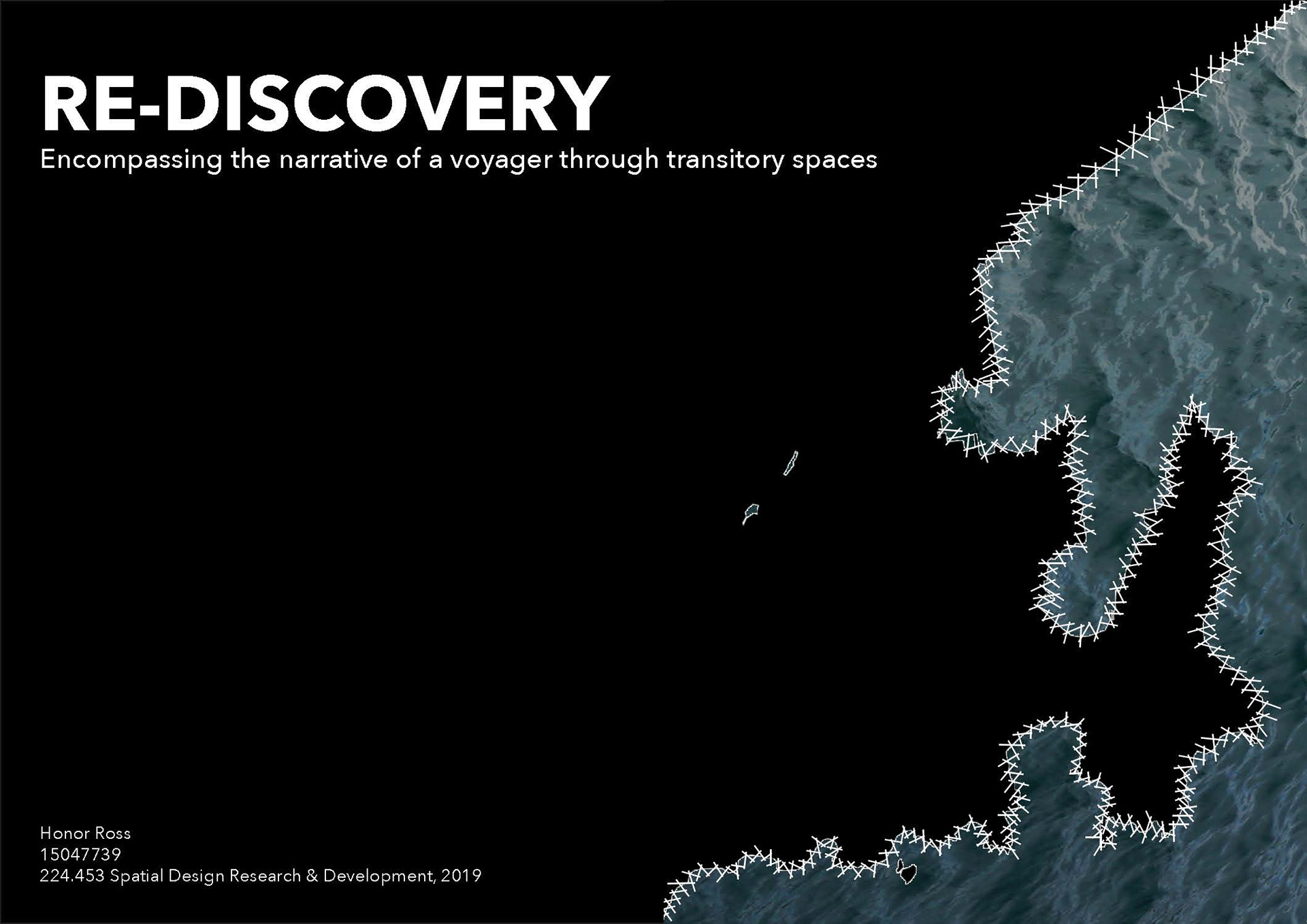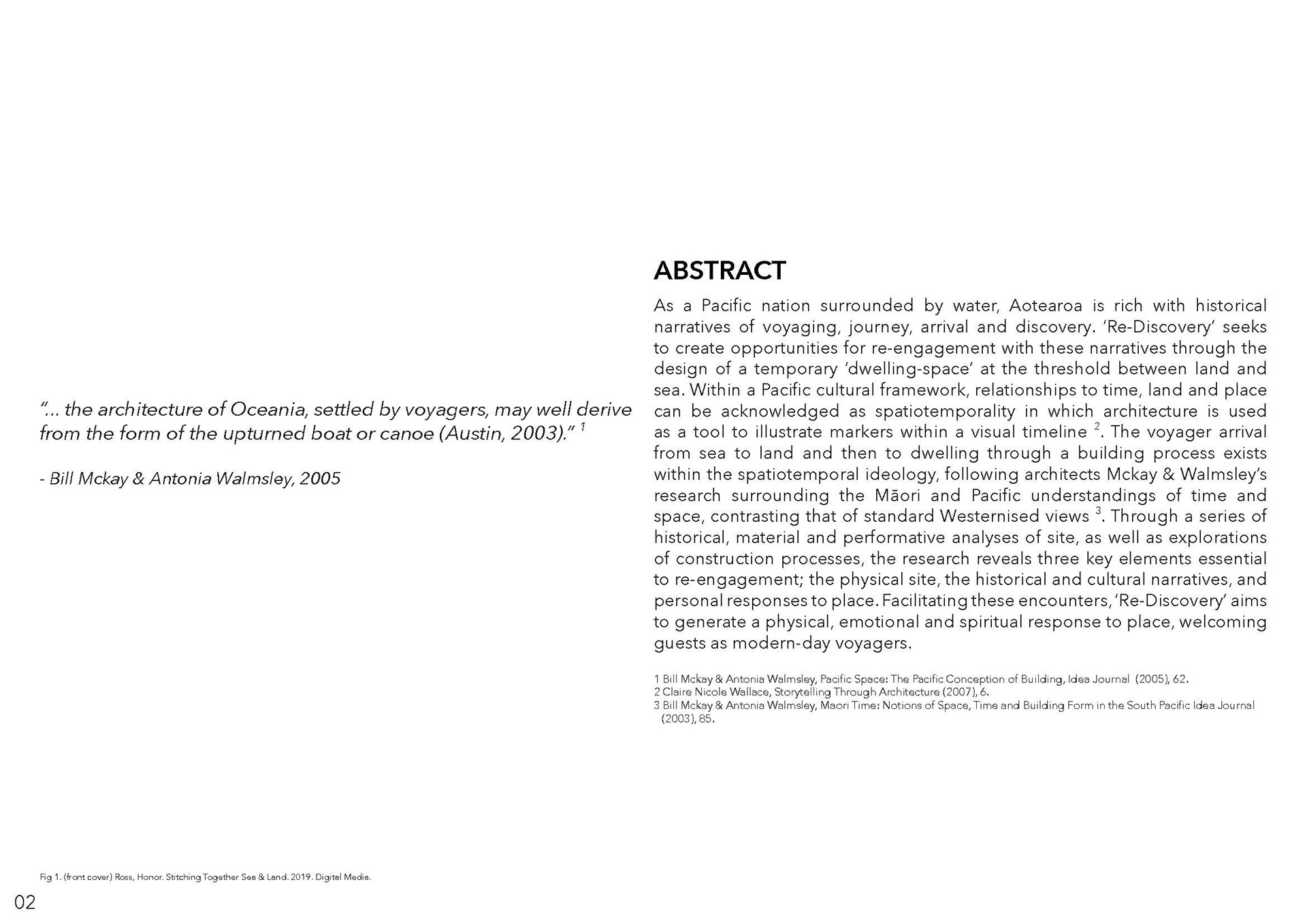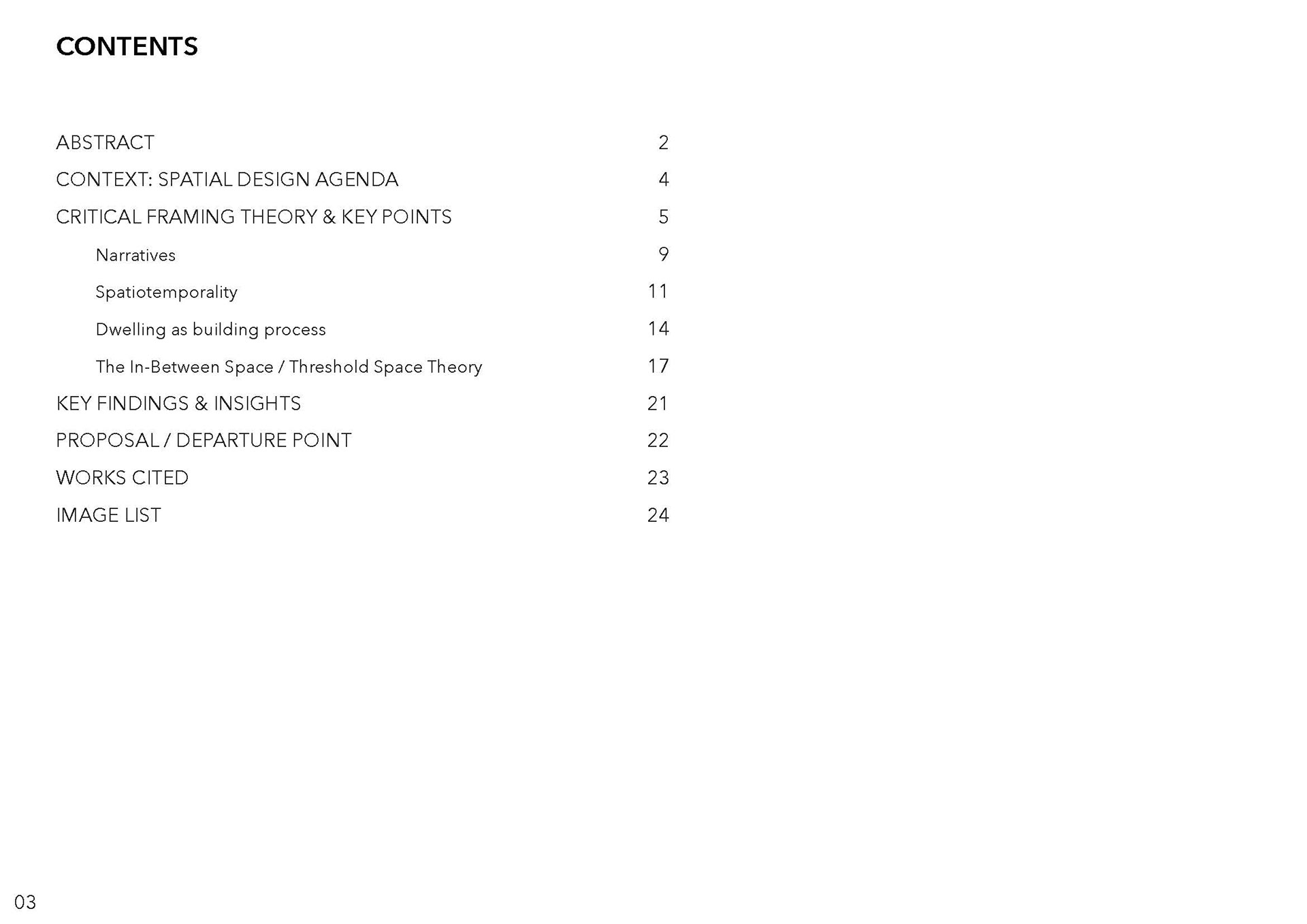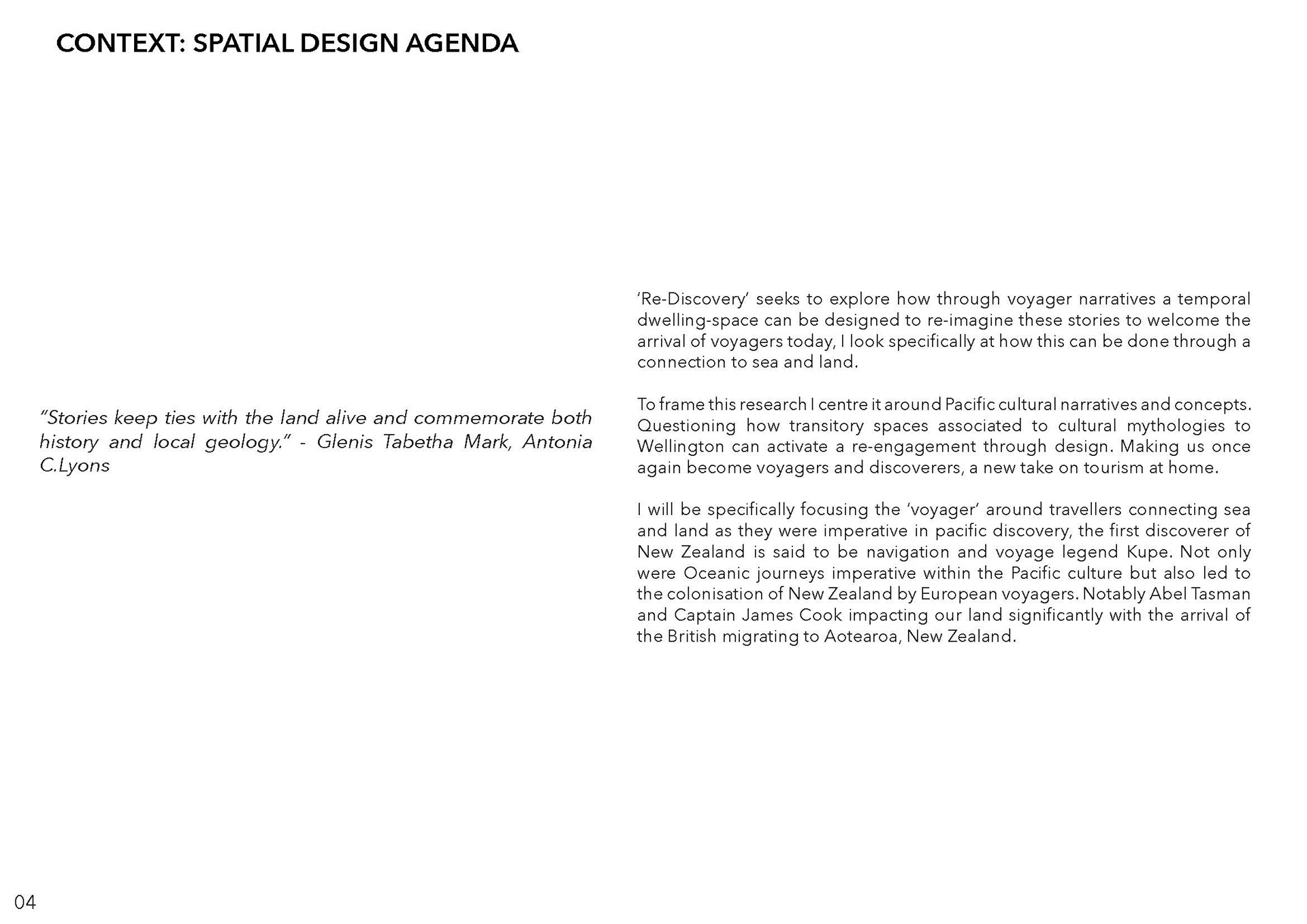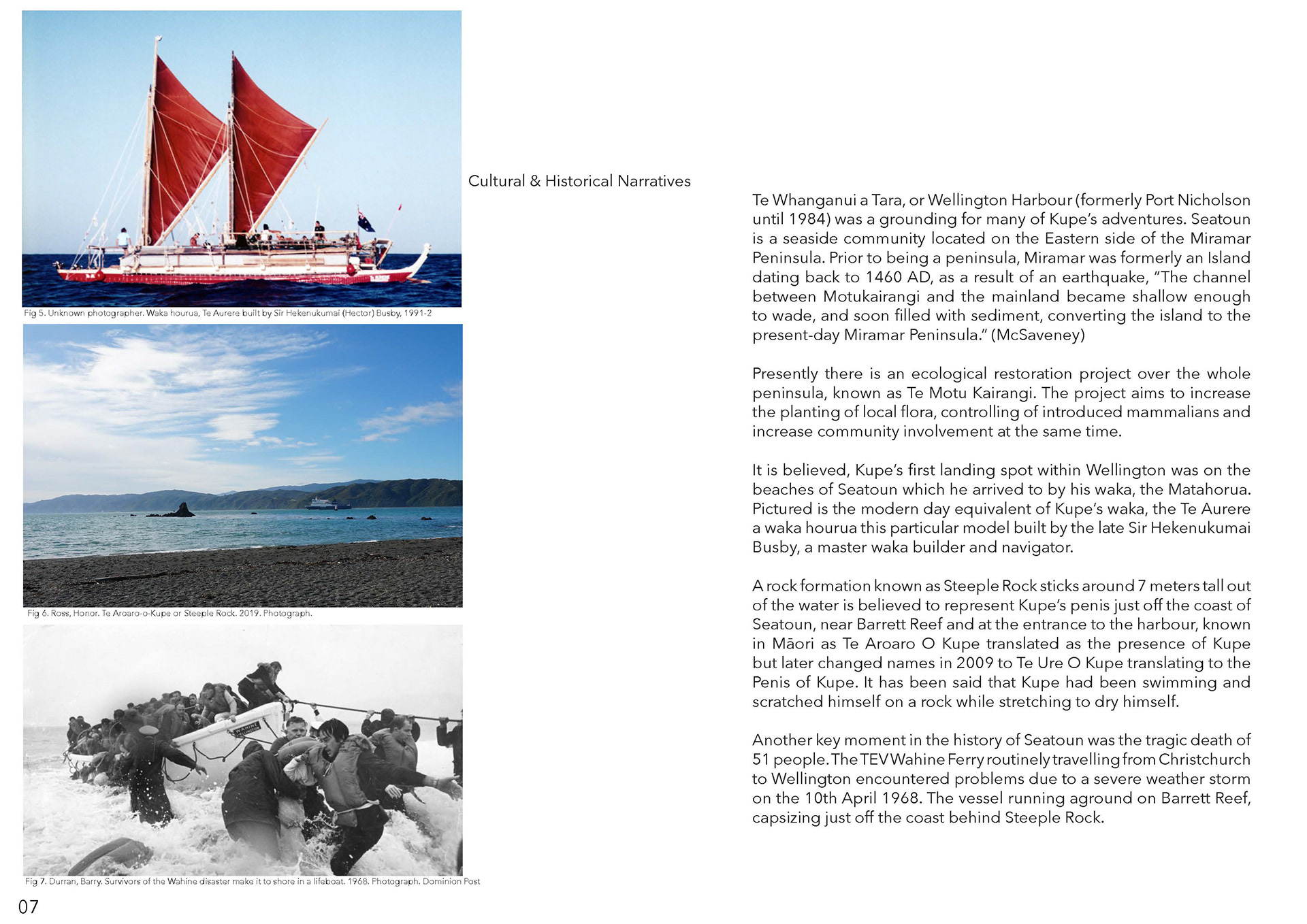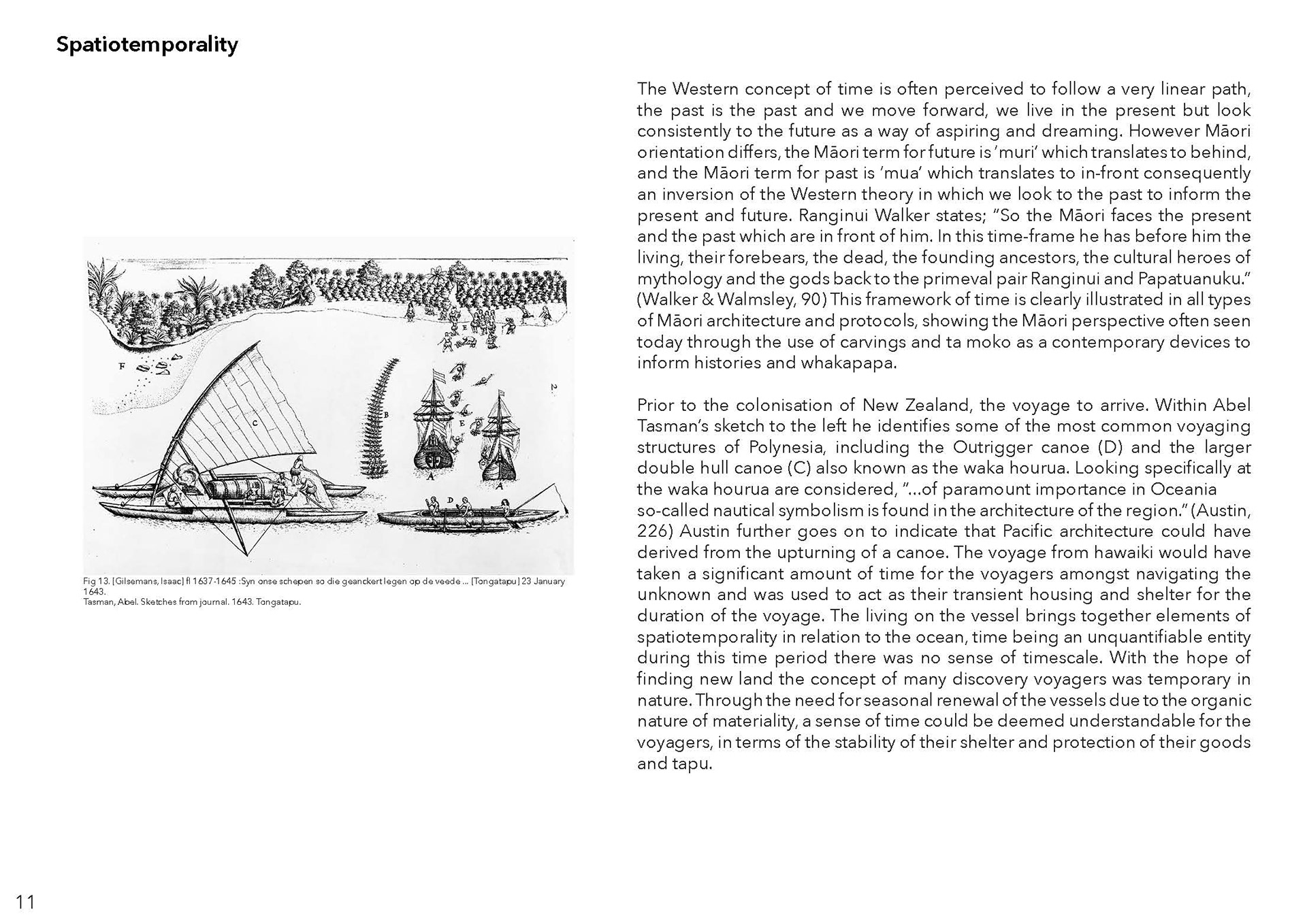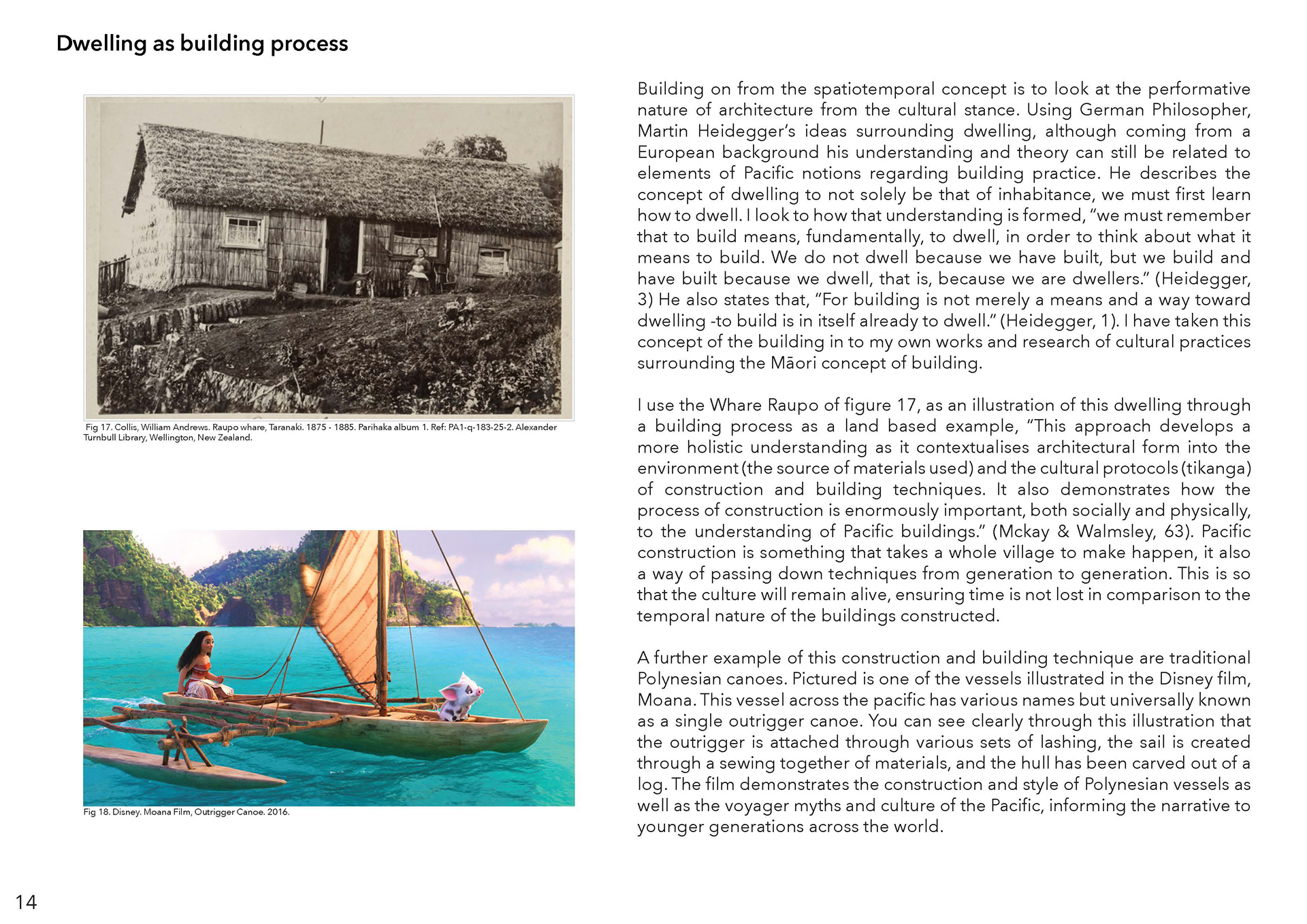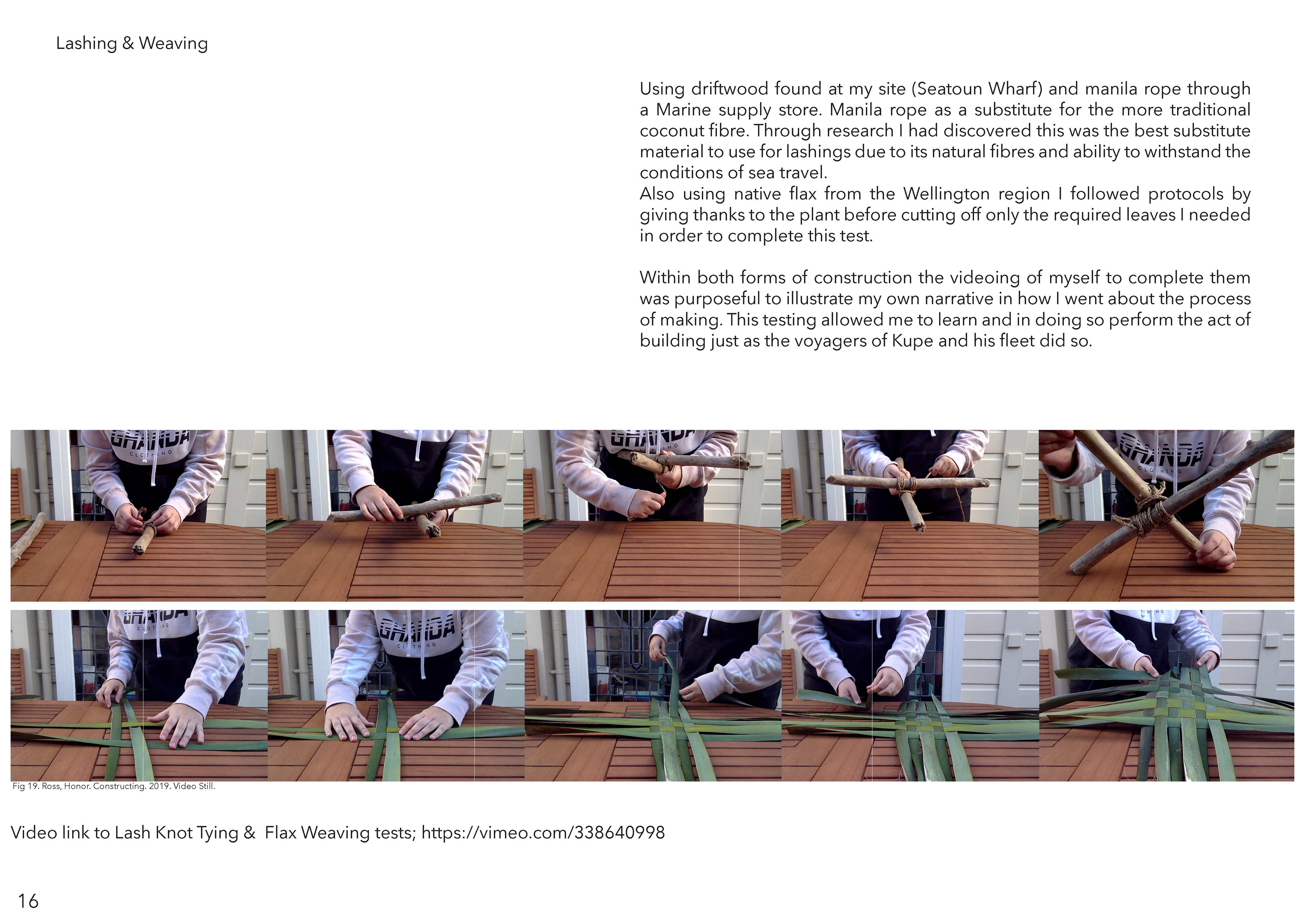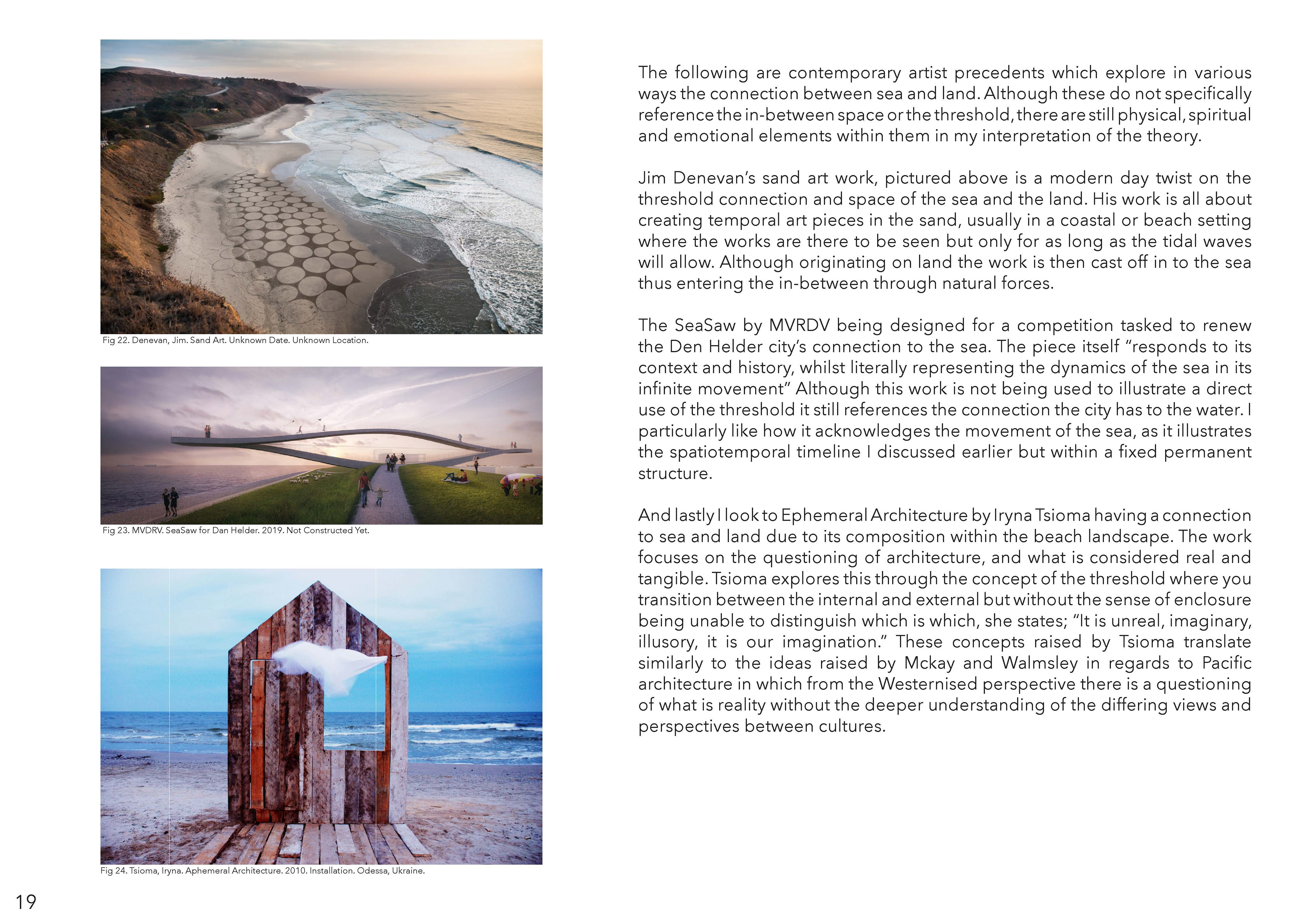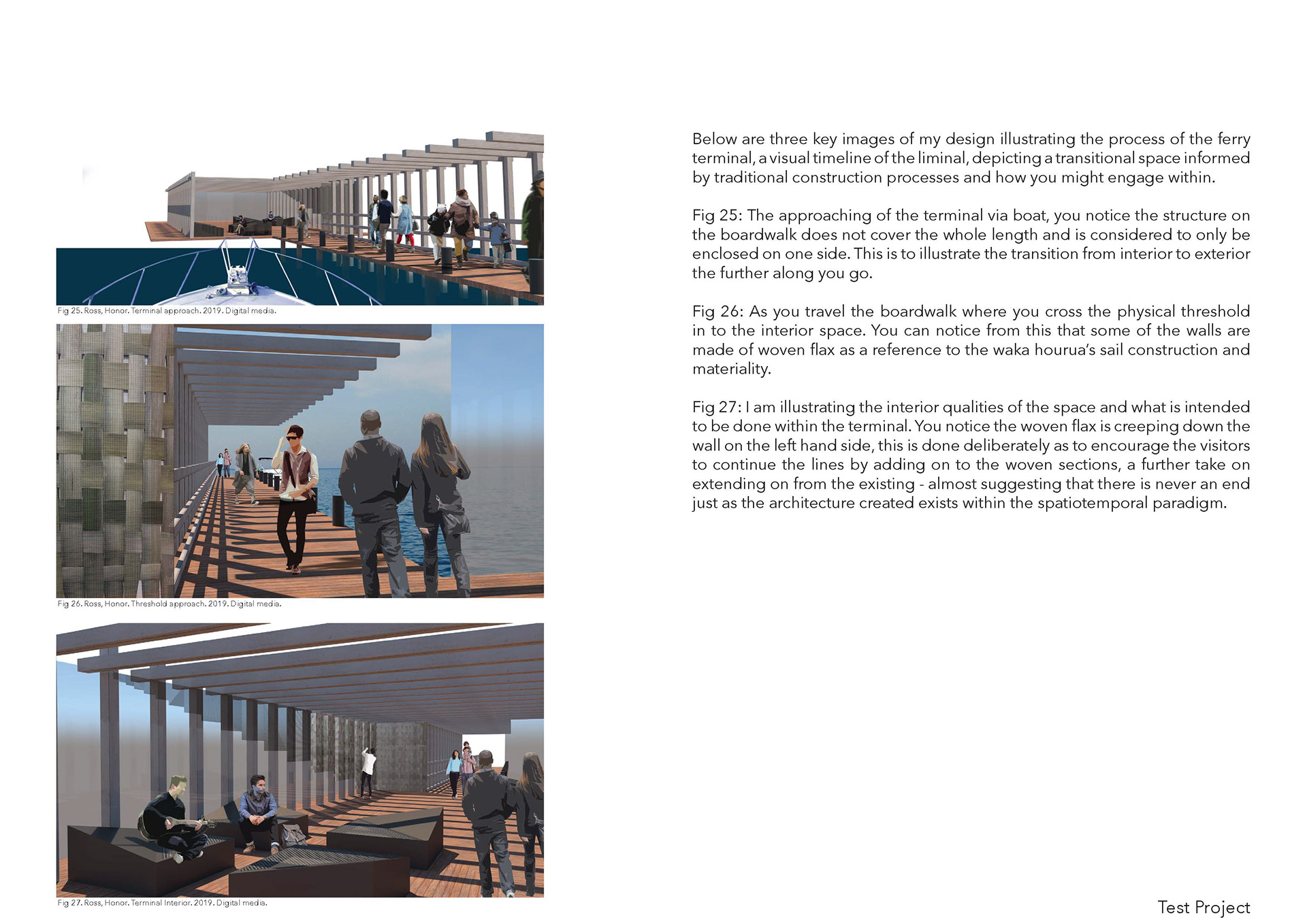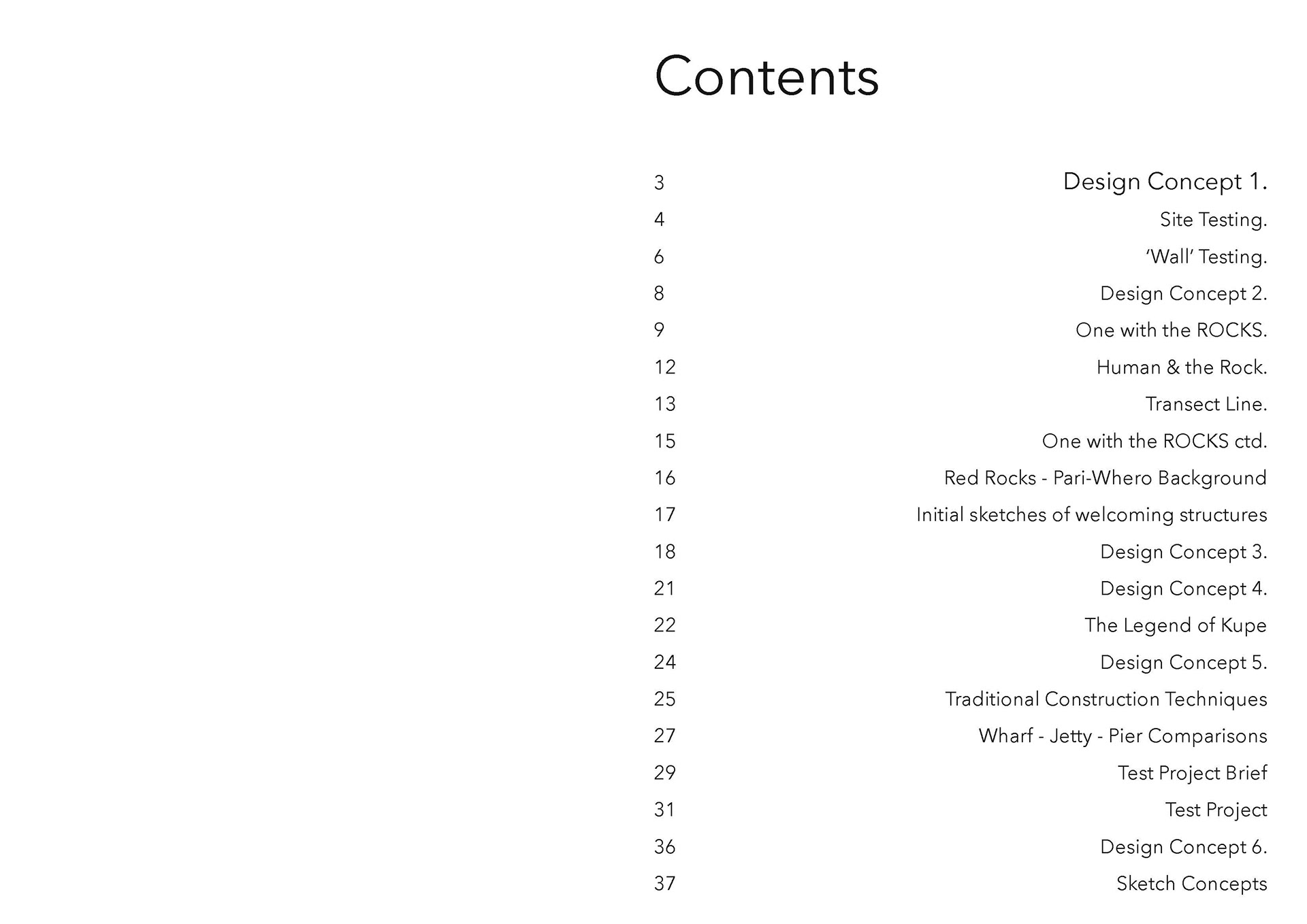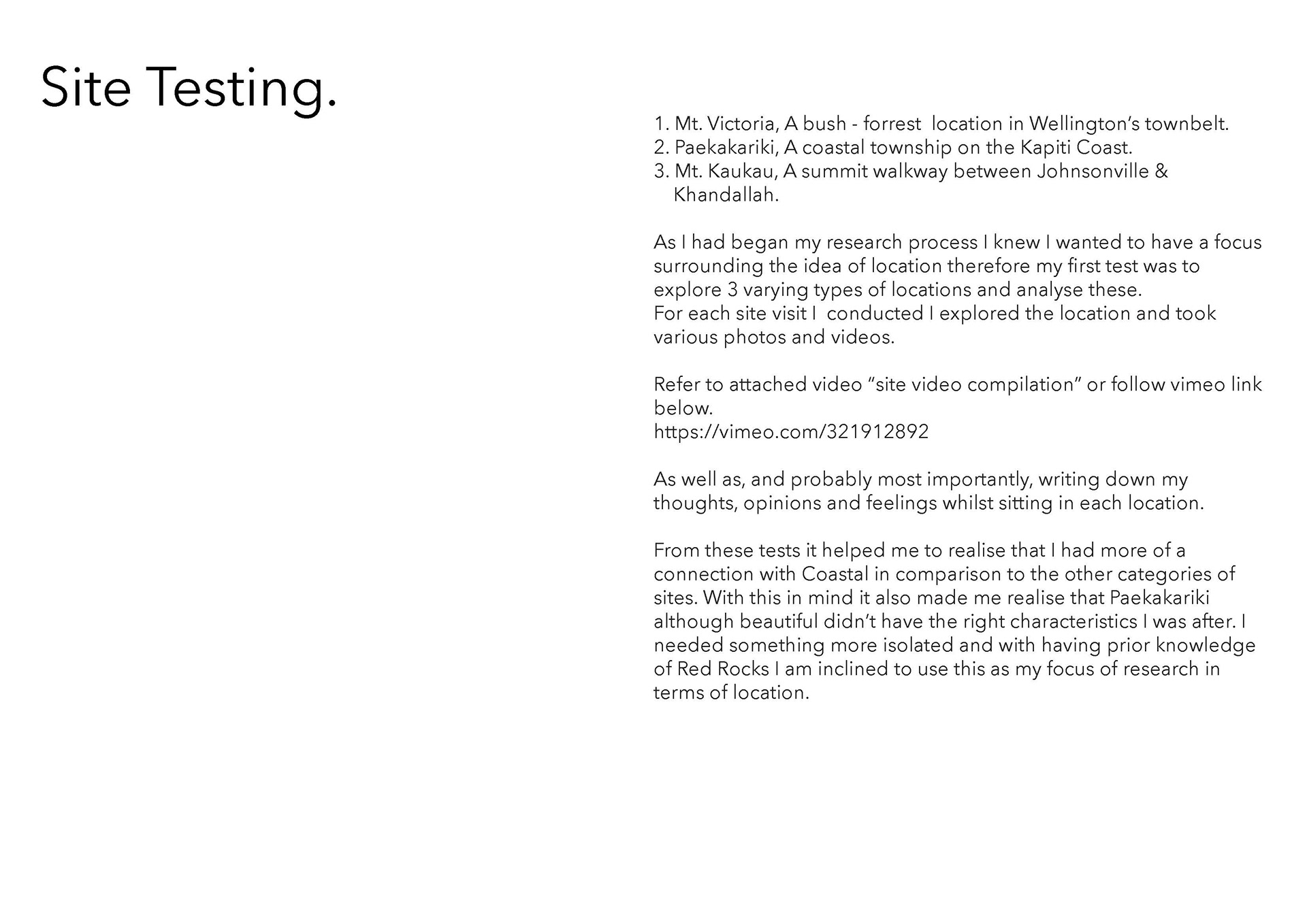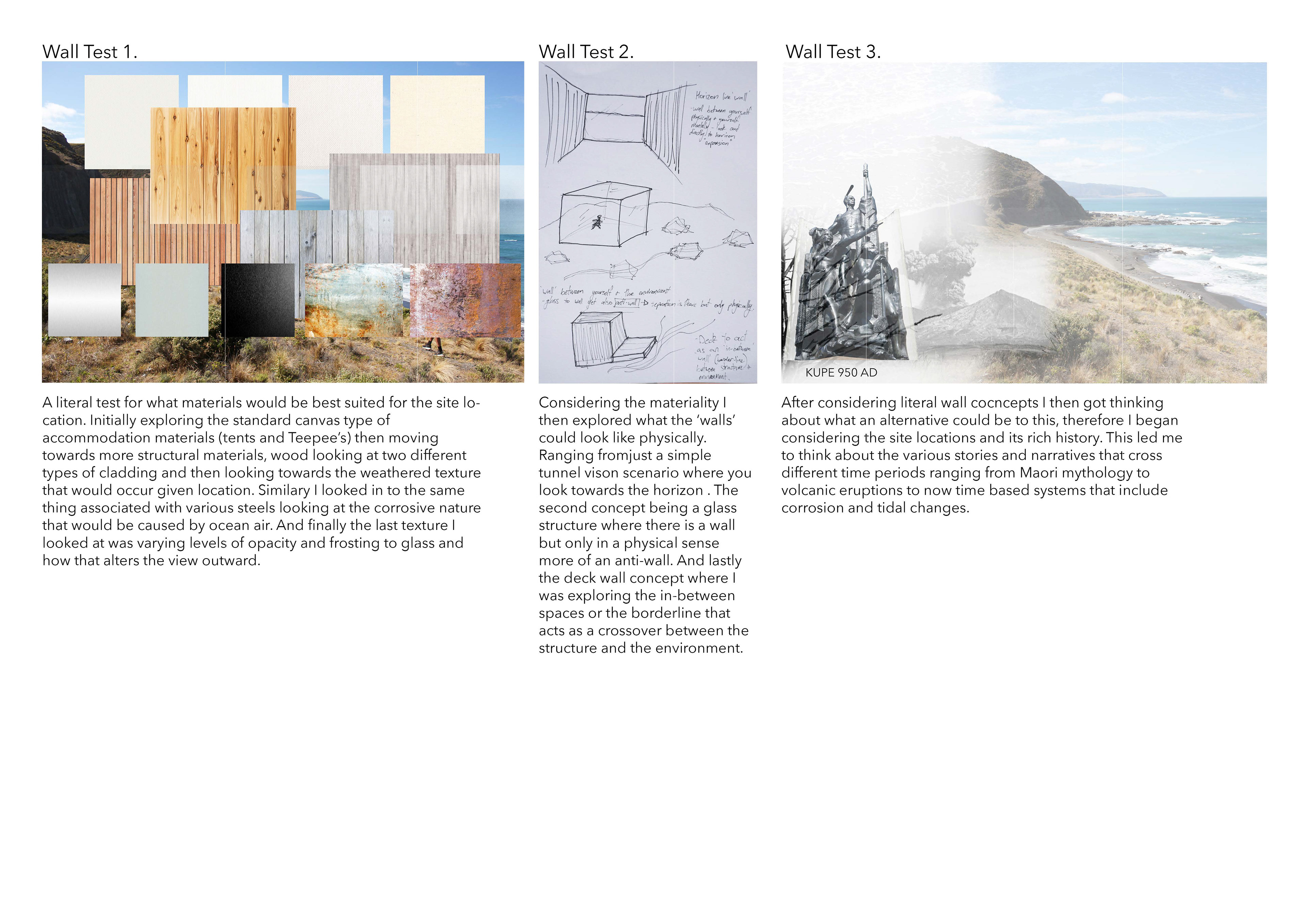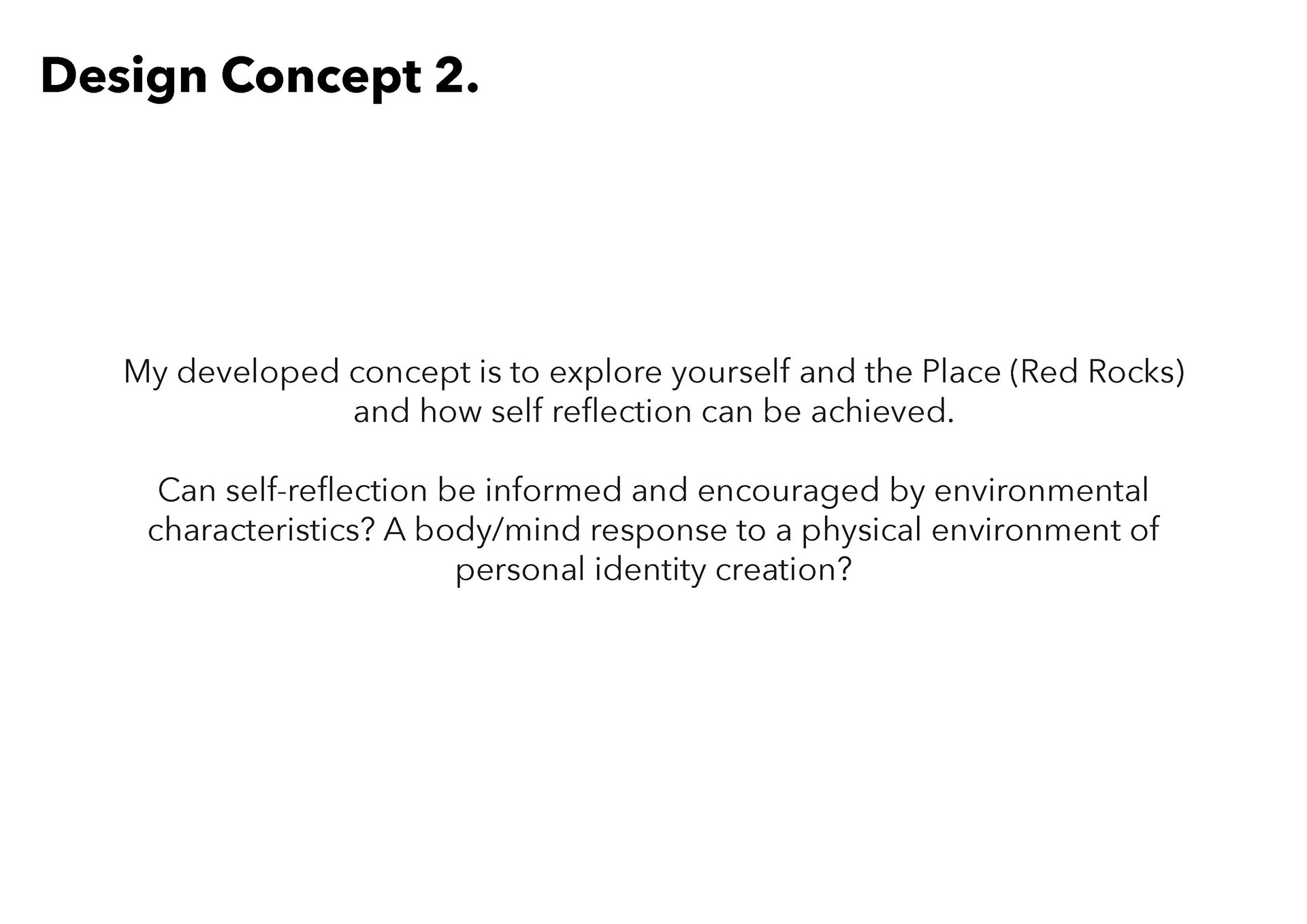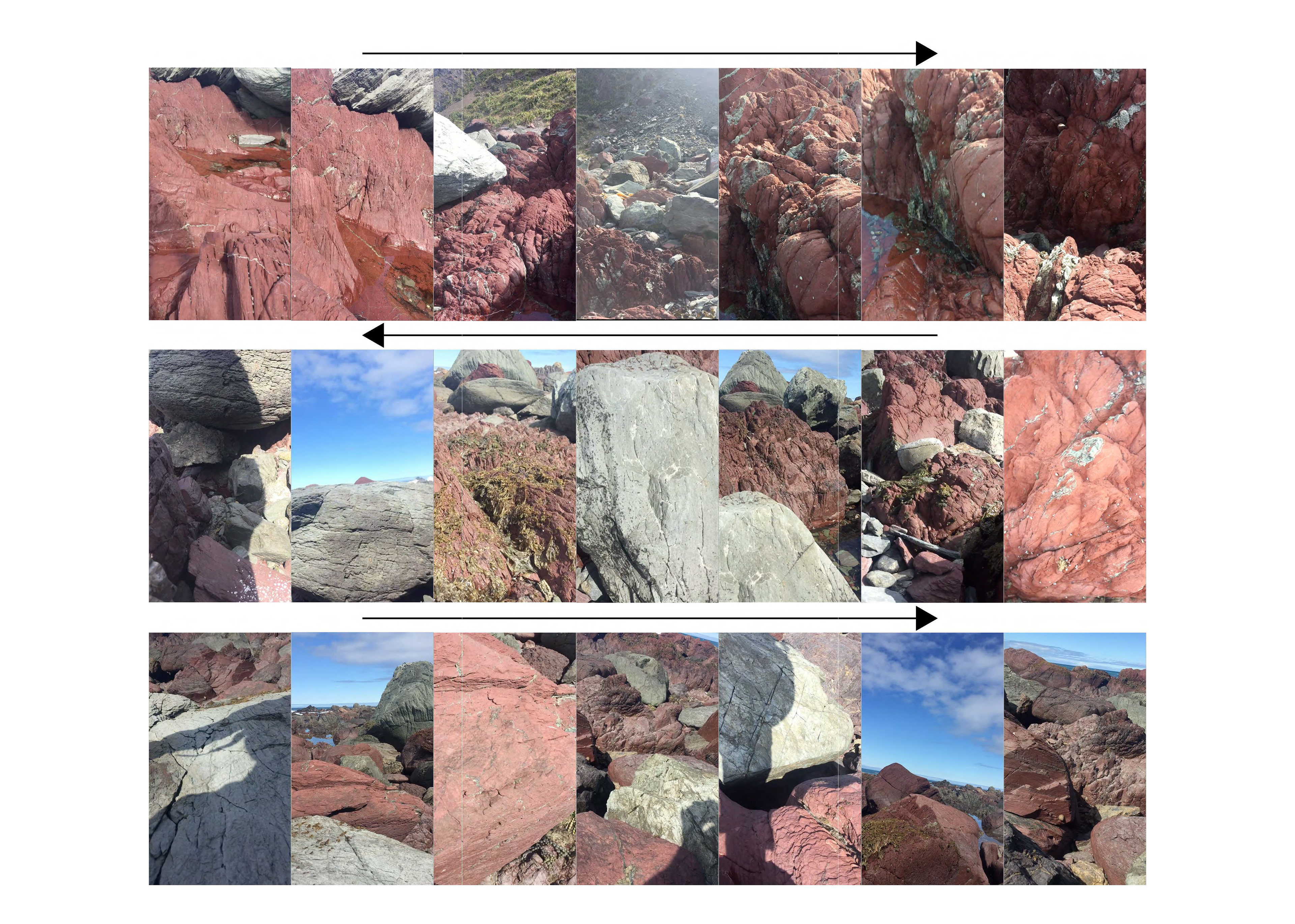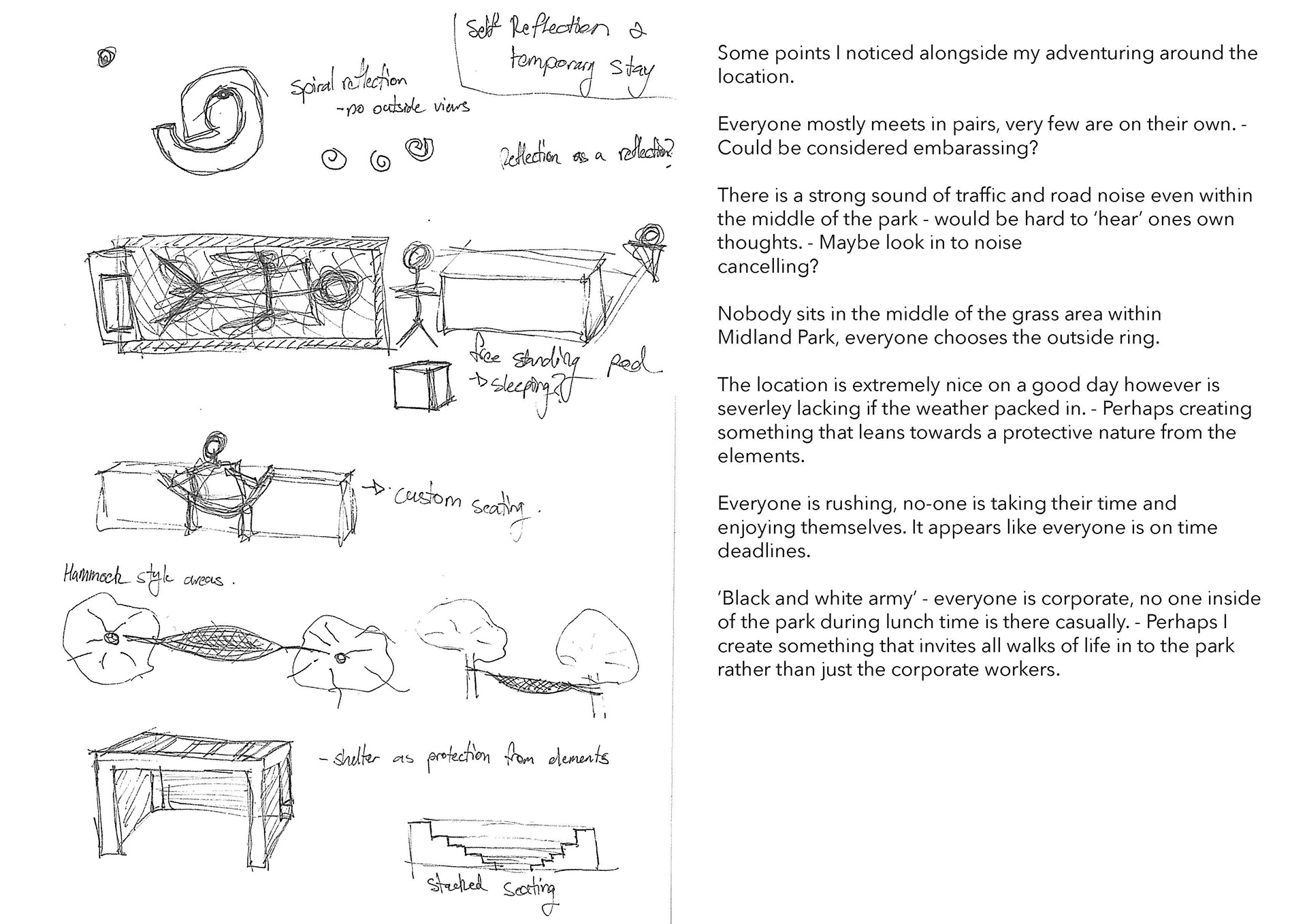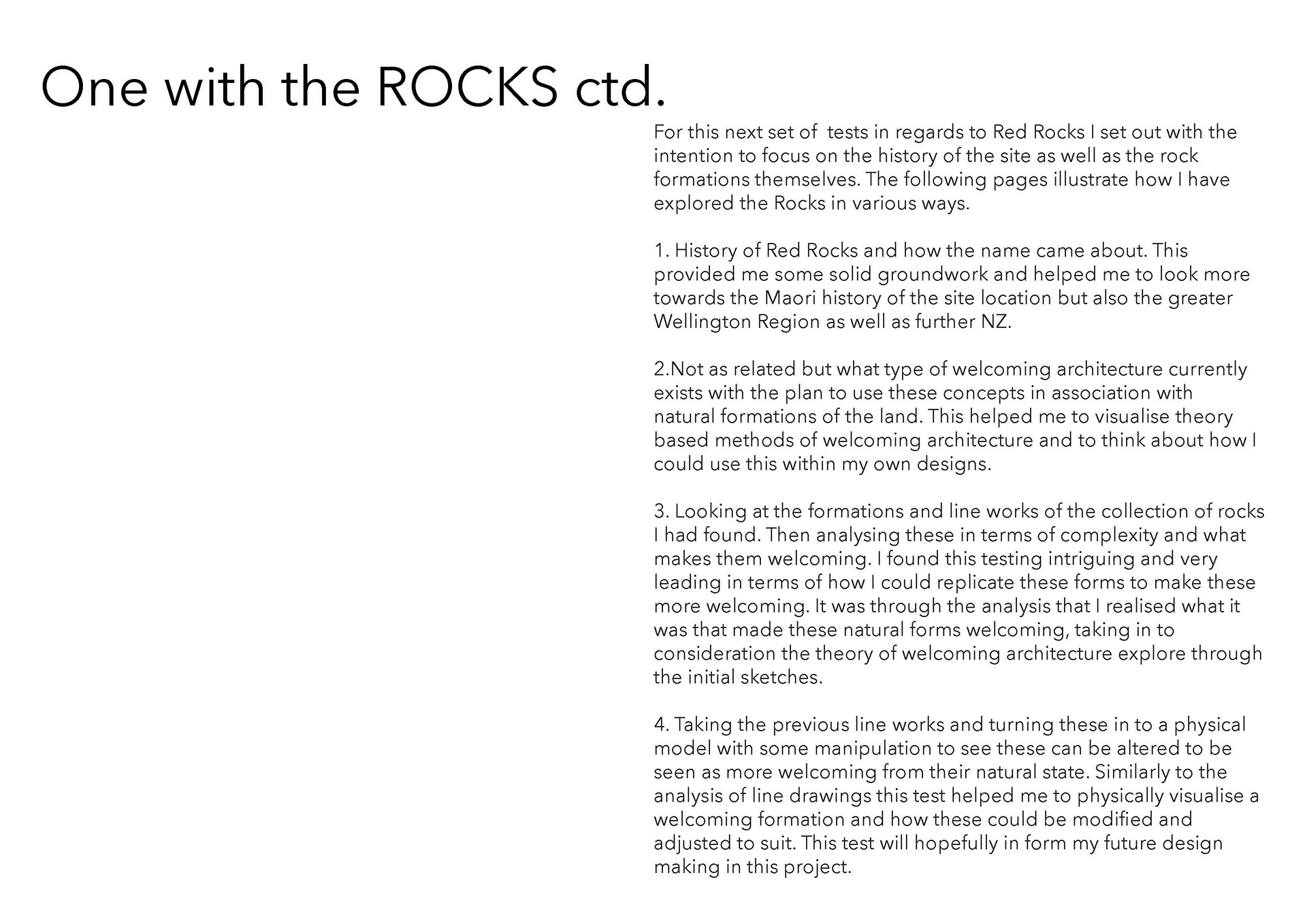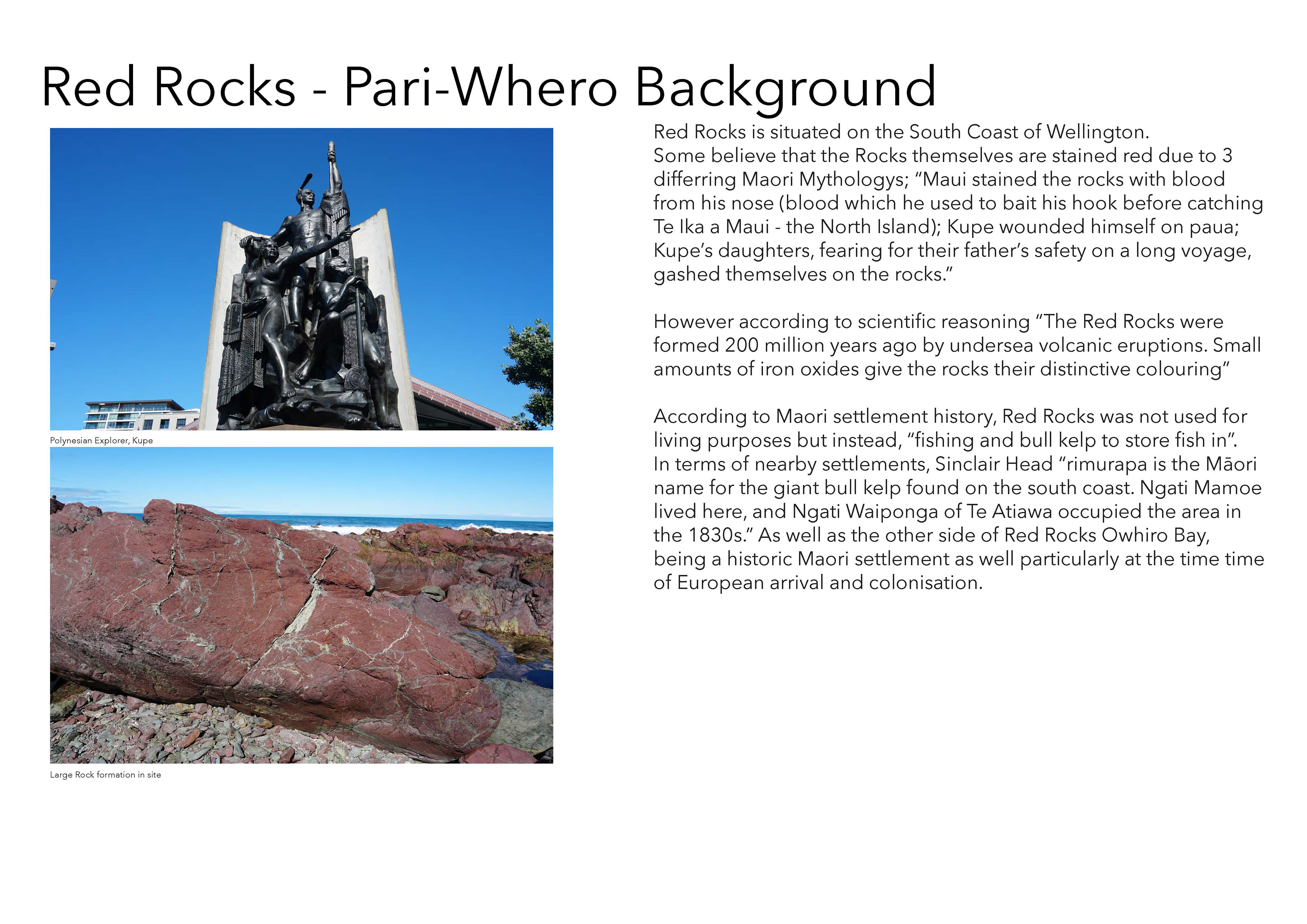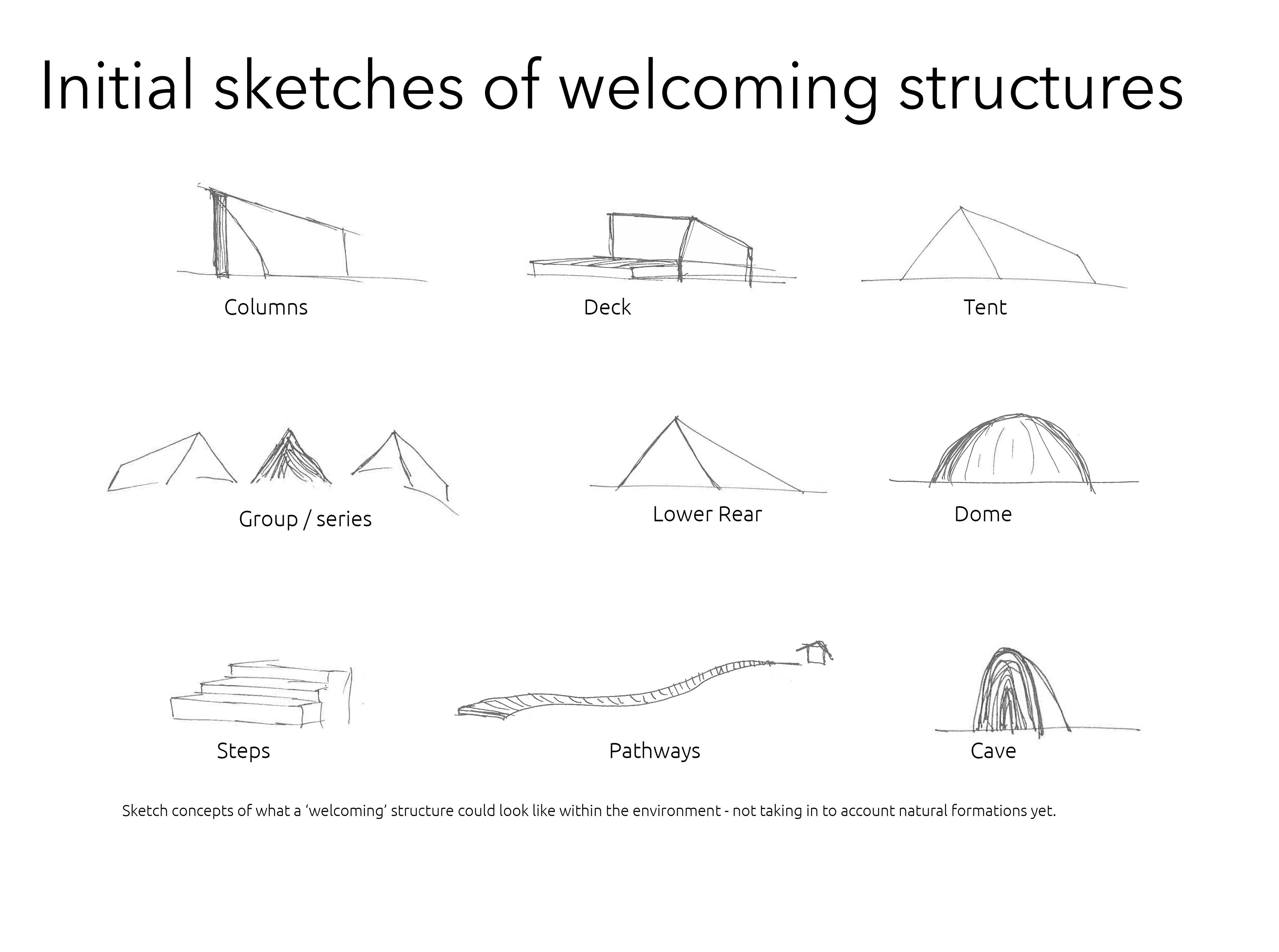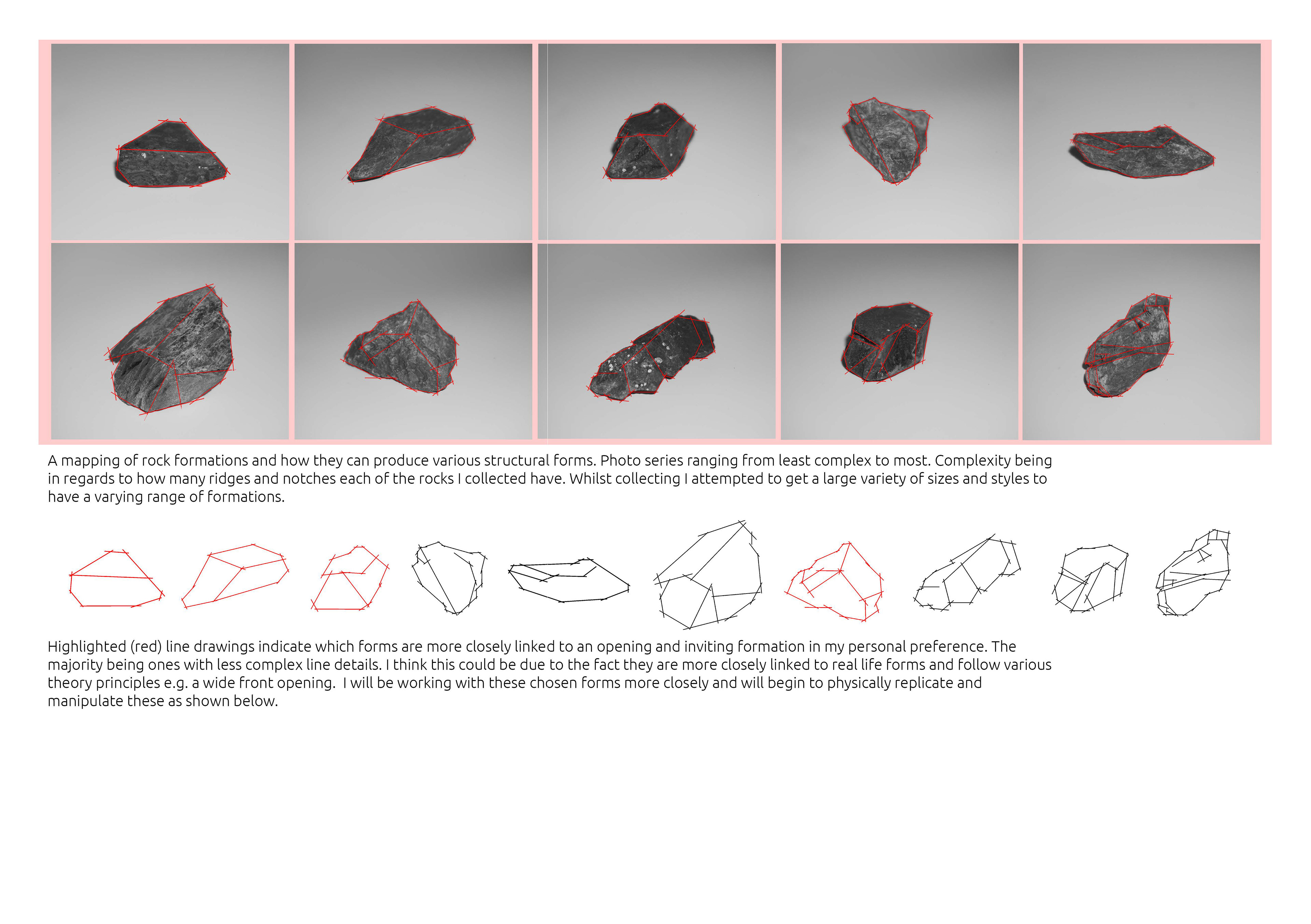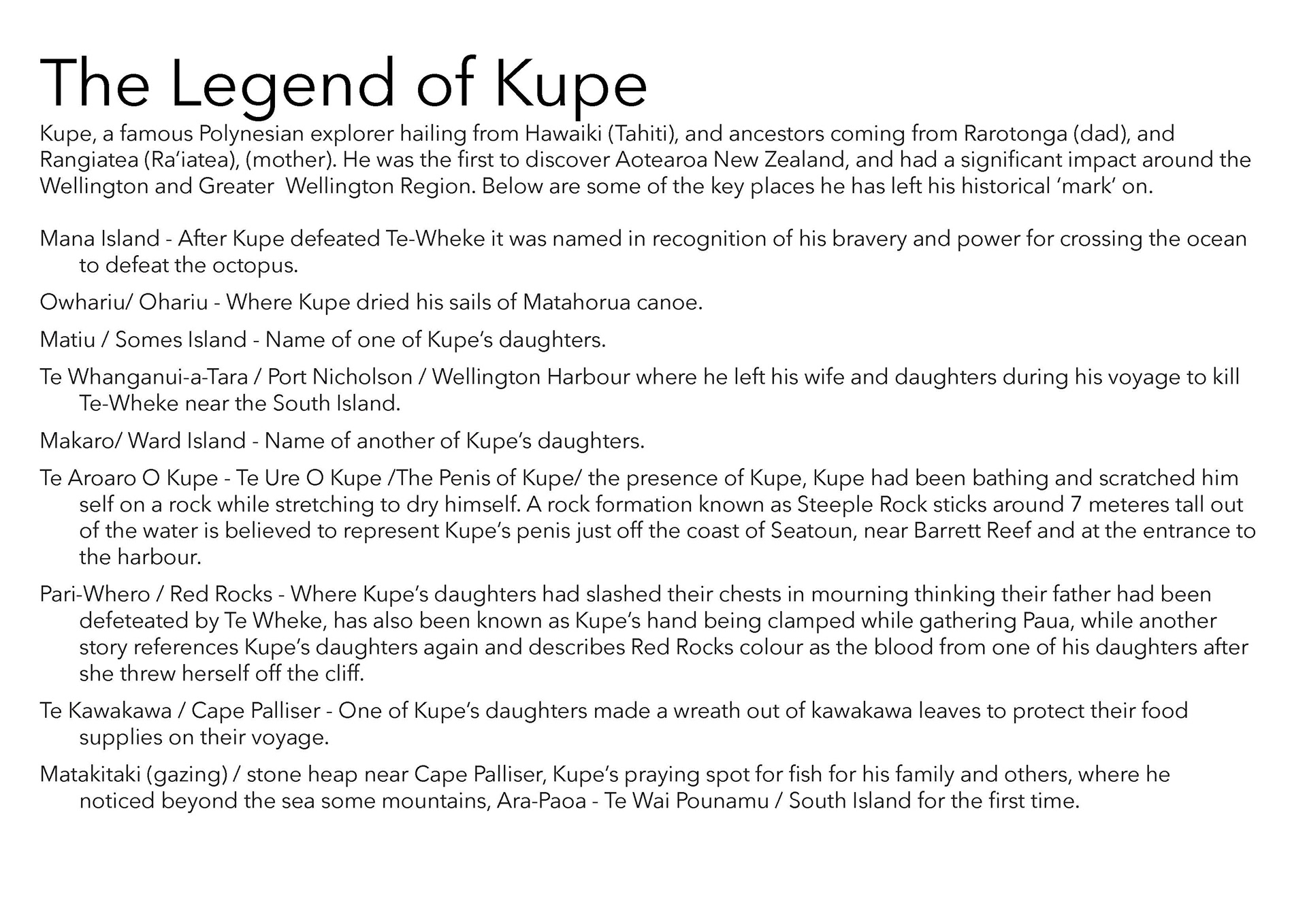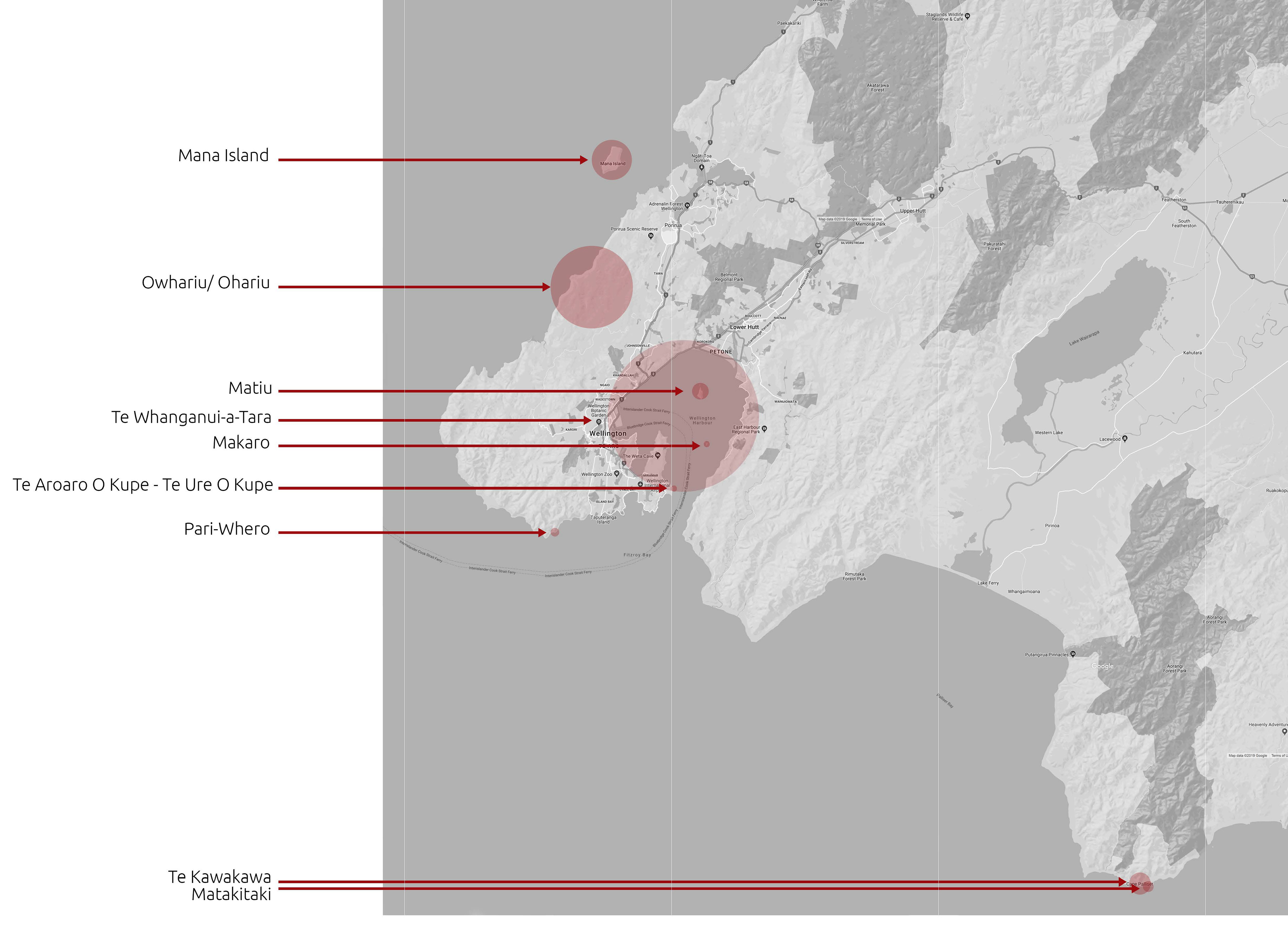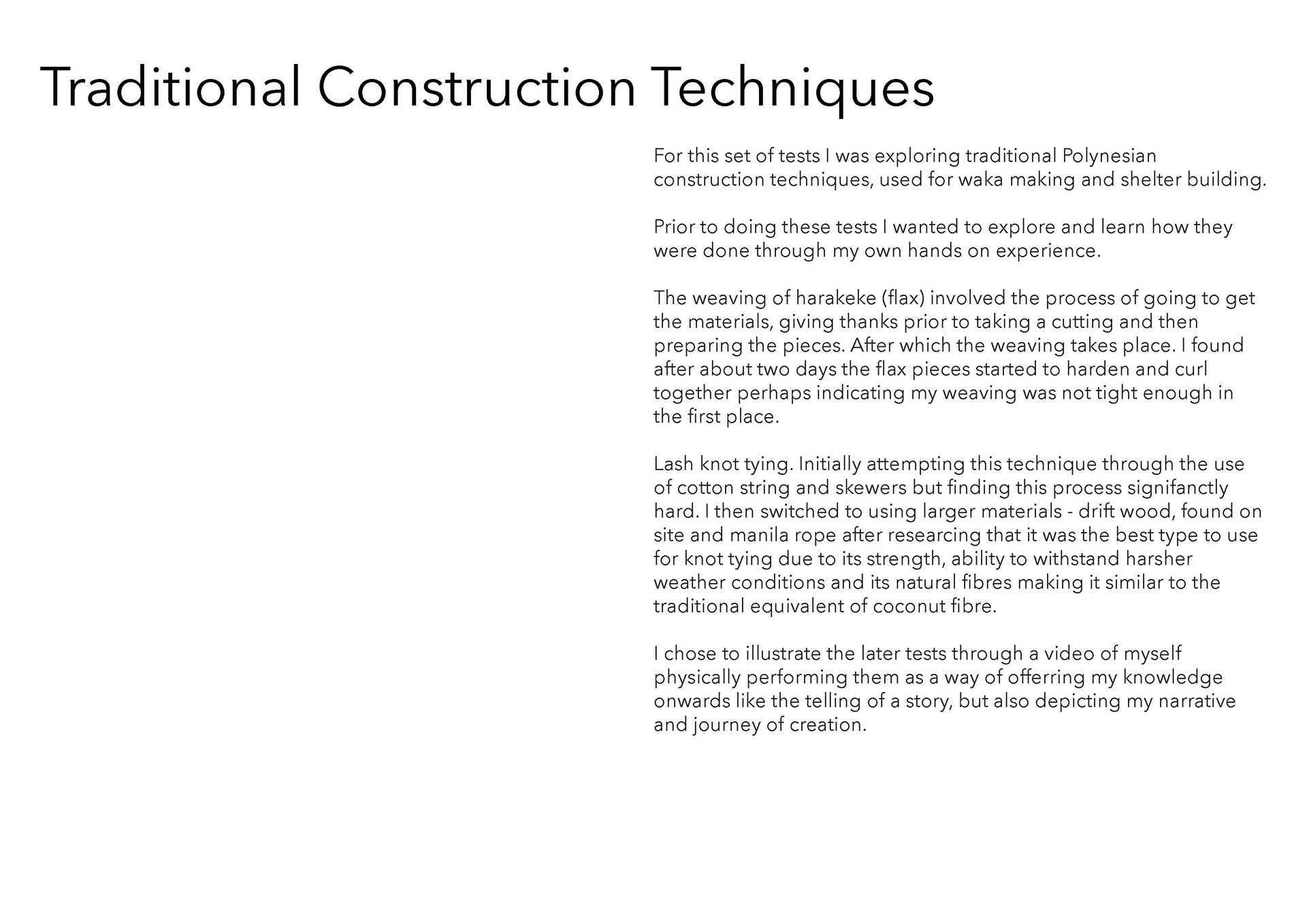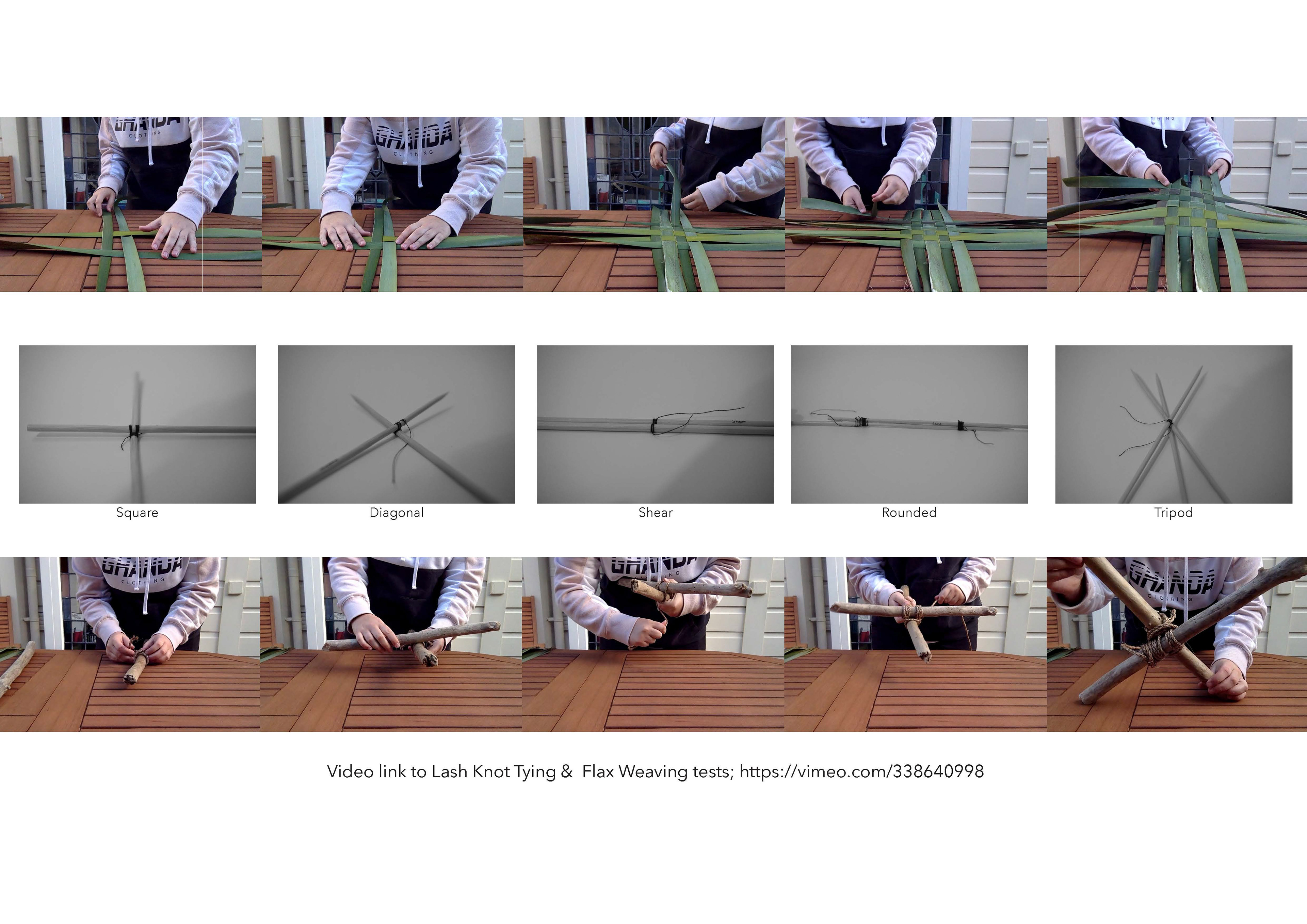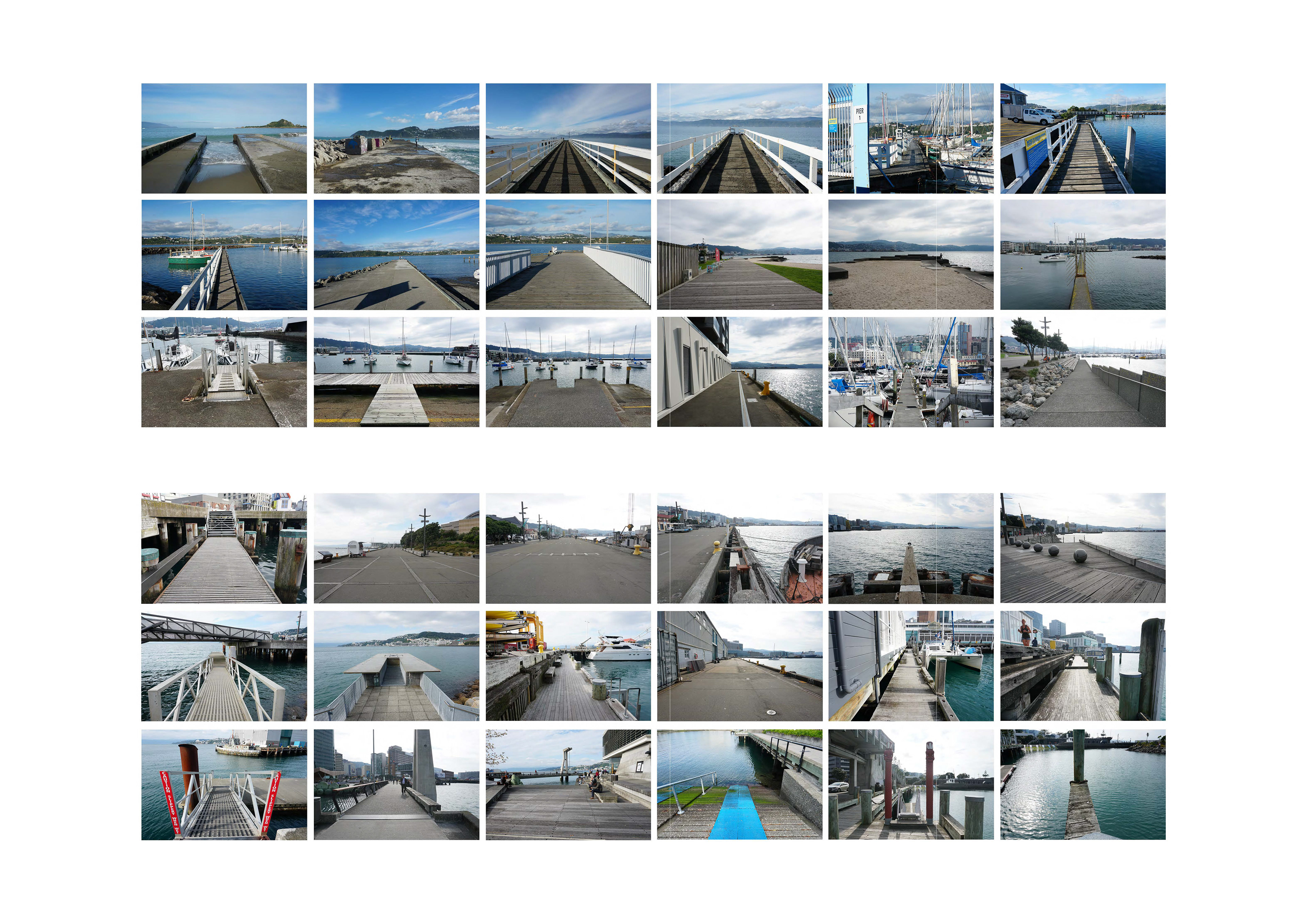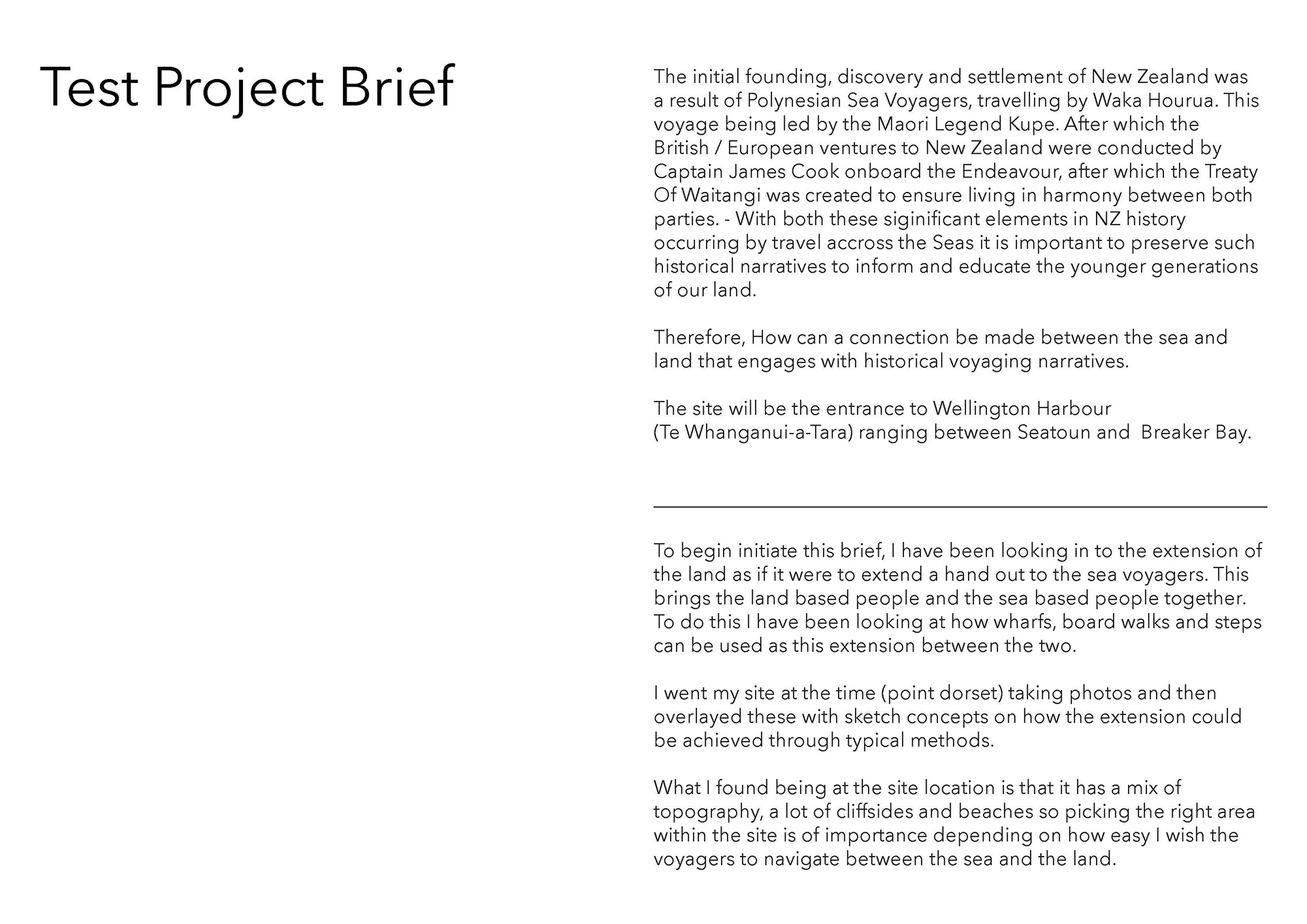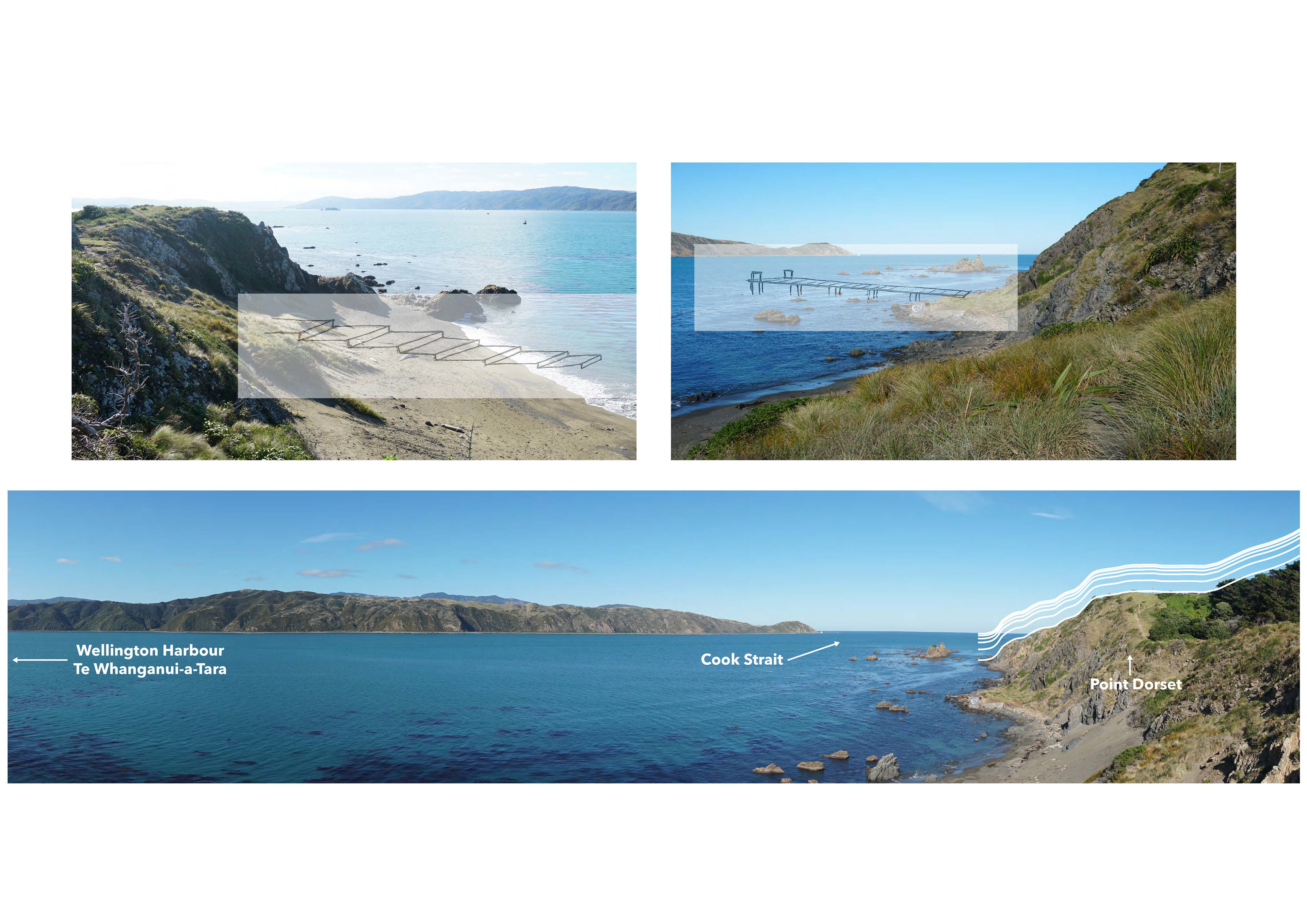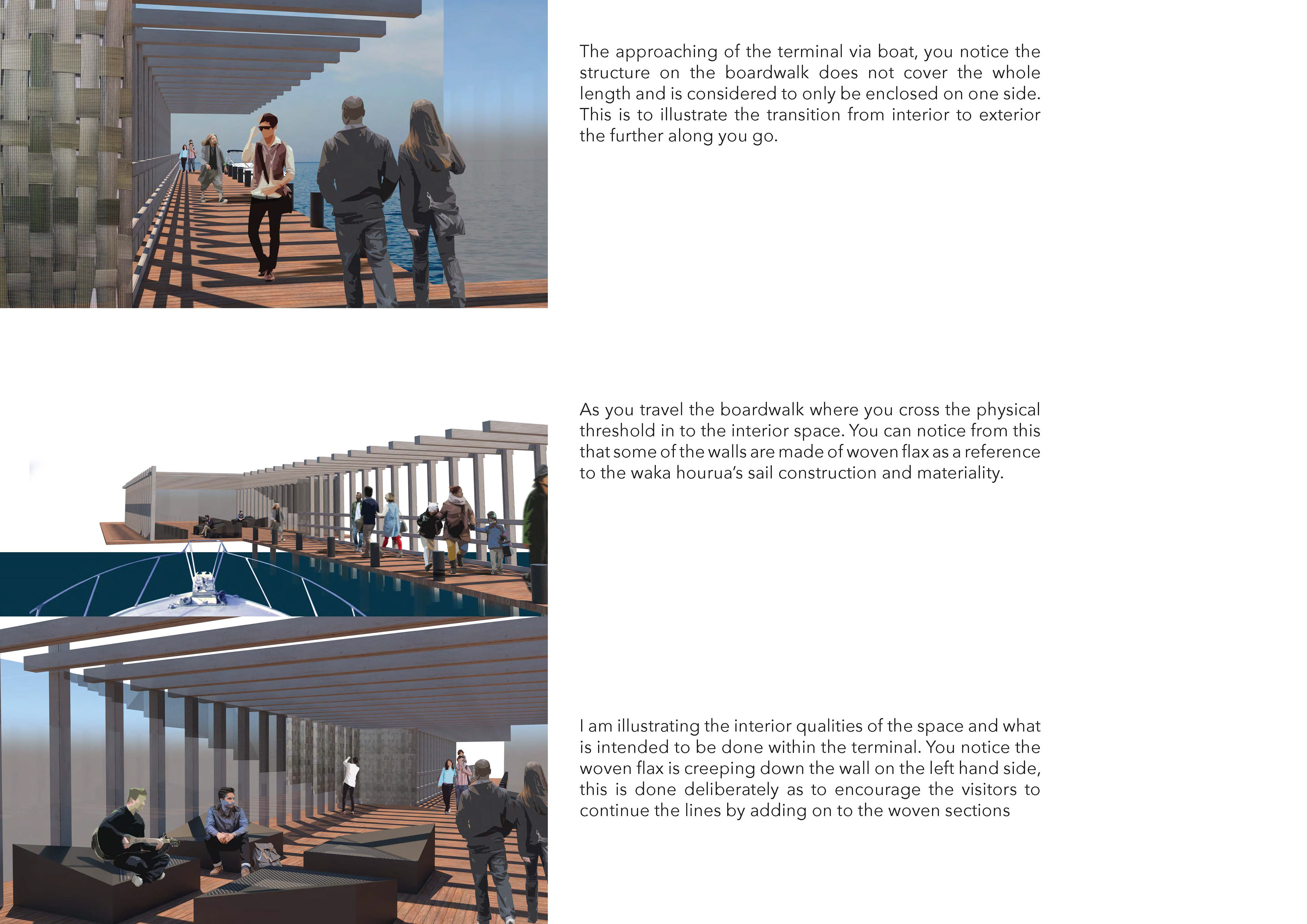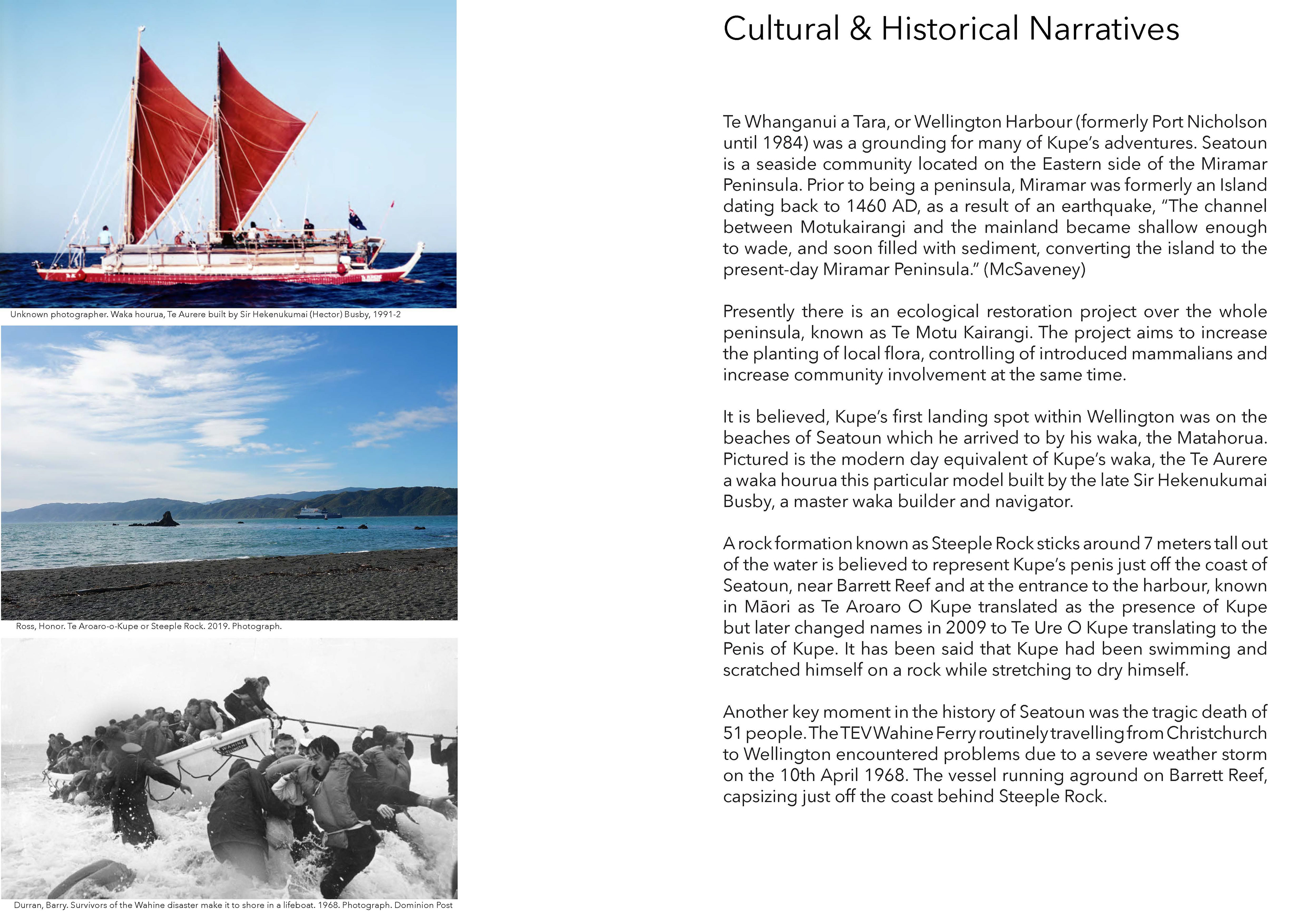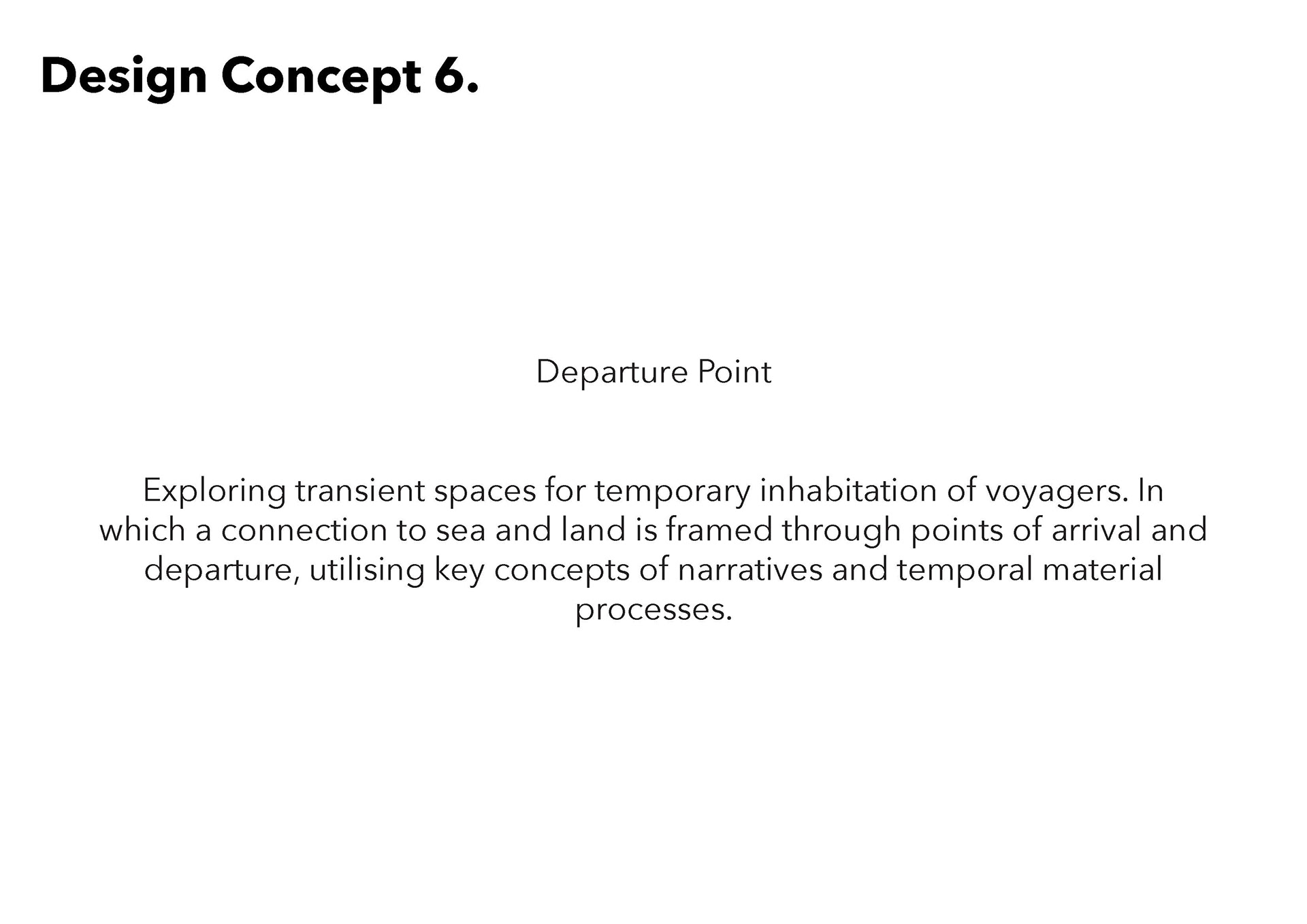Re-Discovery
The Narrative of a Voyager
Honor Ross
“... the architecture of Oceania, settled by voyagers, may well derive from the form of the upturned boat or canoe (Austin, 2003).” 1
- Bill Mckay & Antonia Walmsley, 2005
As a Pacific nation surrounded by water, Aotearoa is rich with historical narratives of voyaging, journey, arrival and discovery. ‘Re-Discovery’ seeks to create opportunities for re-engagement with these narratives through the design of a temporary ‘dwelling-space’ at the threshold between land and sea. Within a Pacific cultural framework, relationships to time, land and place can be acknowledged as spatiotemporality in which architecture is used as a tool to illustrate markers within a visual timeline 2. The voyager arrival from sea to land and then to dwelling through a building process exists within the spatiotemporal ideology, following architects Mckay & Walmsley’s research surrounding the Māori and Pacific understandings of time and space, contrasting that of standard Westernised views 3. Through a series of historical, material and performative analyses of site, as well as explorations of construction processes, the research reveals three key elements essential to re-engagement; the physical site, the historical and cultural narratives, and personal responses to place. Facilitating these encounters, ‘Re-Discovery’ aims to generate a physical, emotional and spiritual response to place, welcoming guests as modern-day voyagers.
1 Bill Mckay & Antonia Walmsley, Pacific Space: The Pacific Conception of Building, Idea Journal (2005), 62.
2 Claire Nicole Wallace, Storytelling Through Architecture (2007), 6.
3 Bill Mckay & Antonia Walmsley, Maori Time: Notions of Space, Time and Building Form in the South Pacific Idea Journal (2003), 85.
